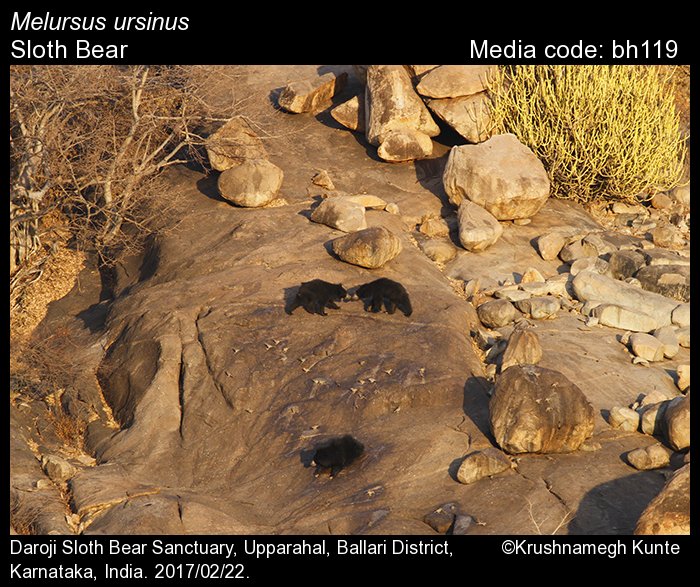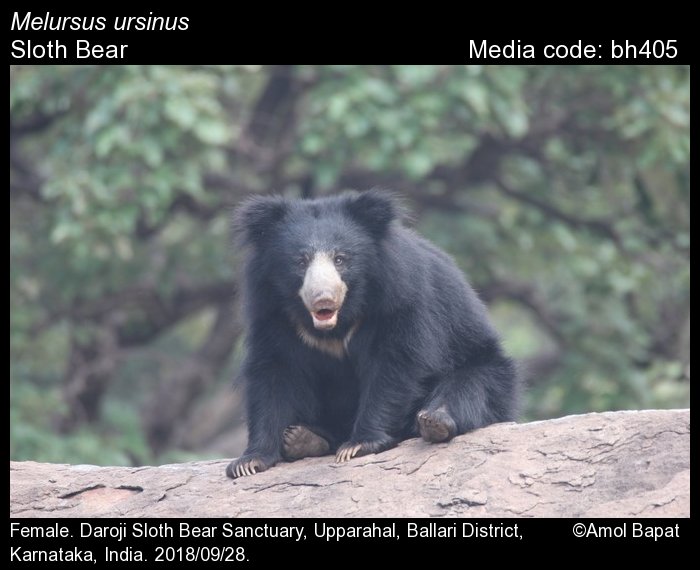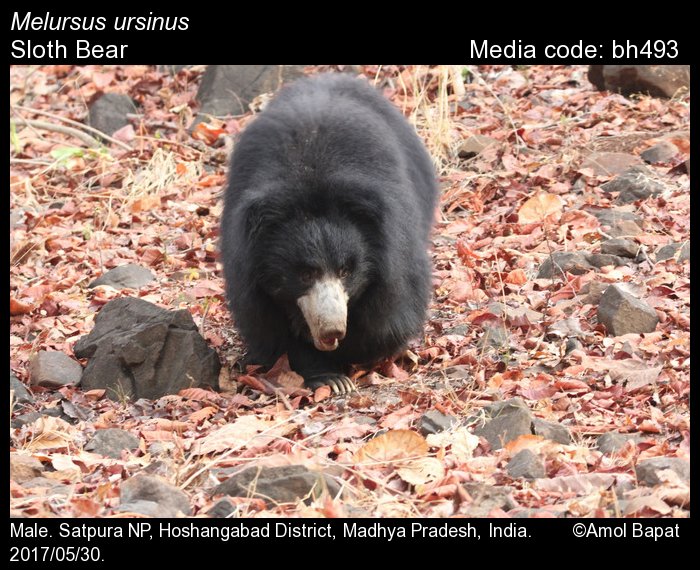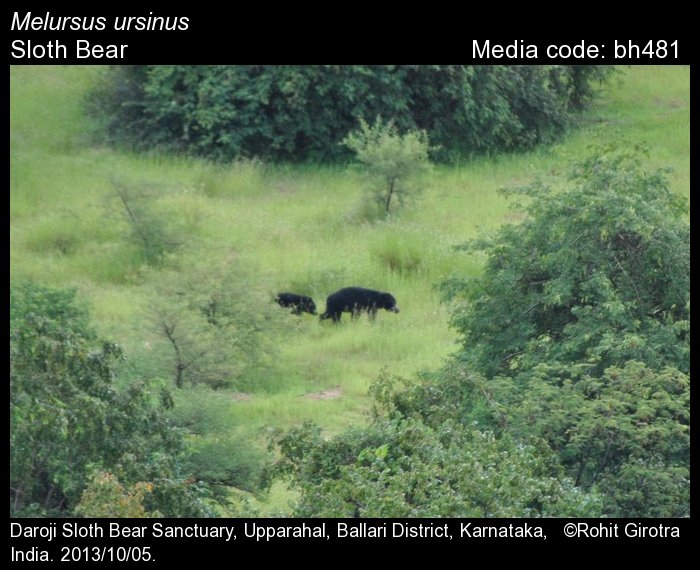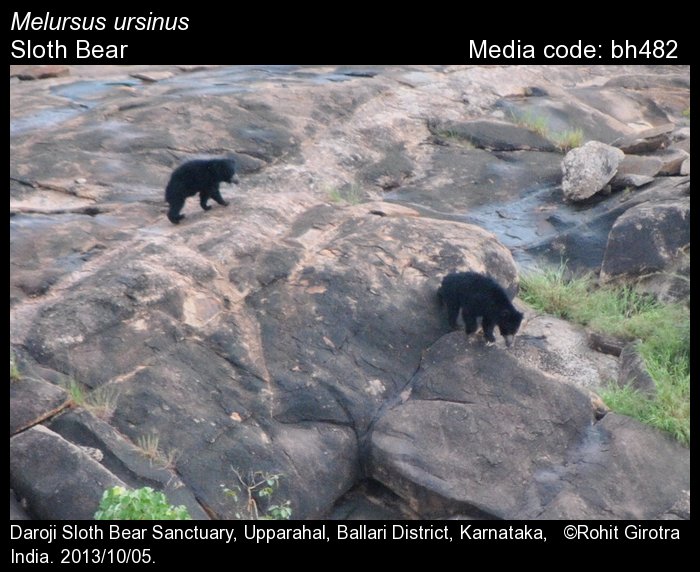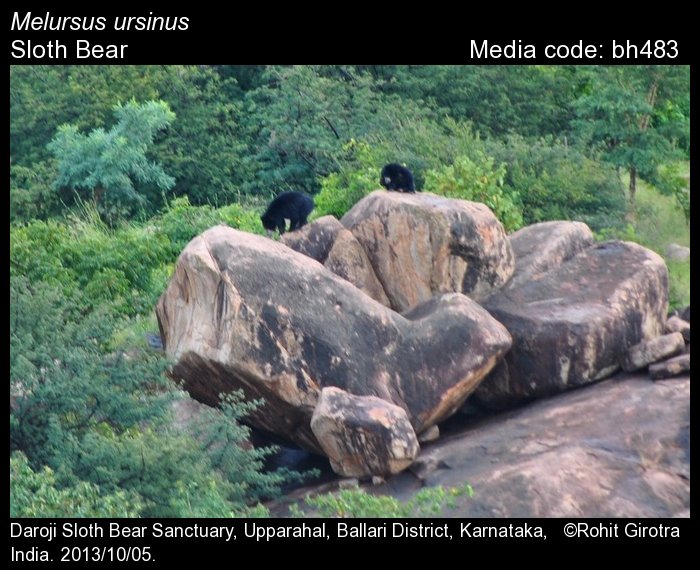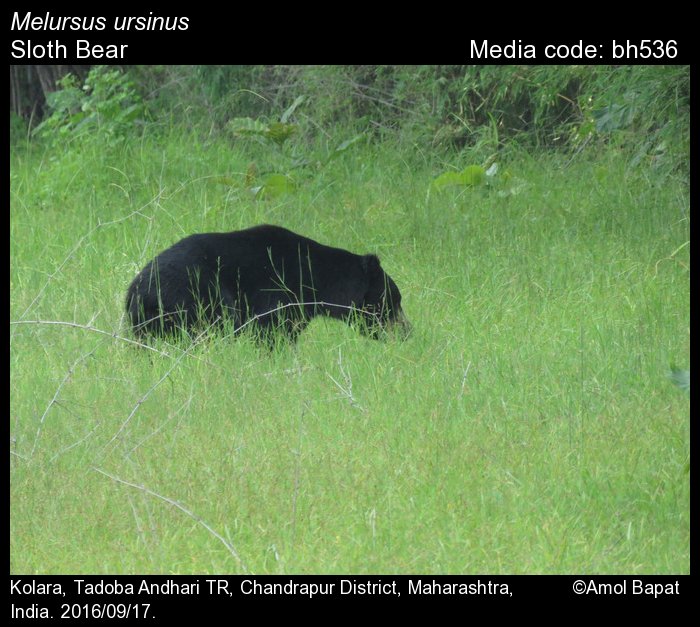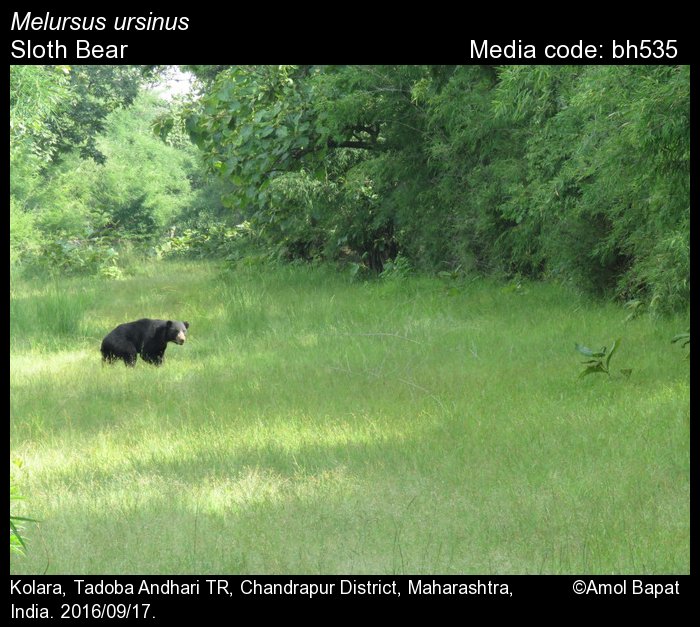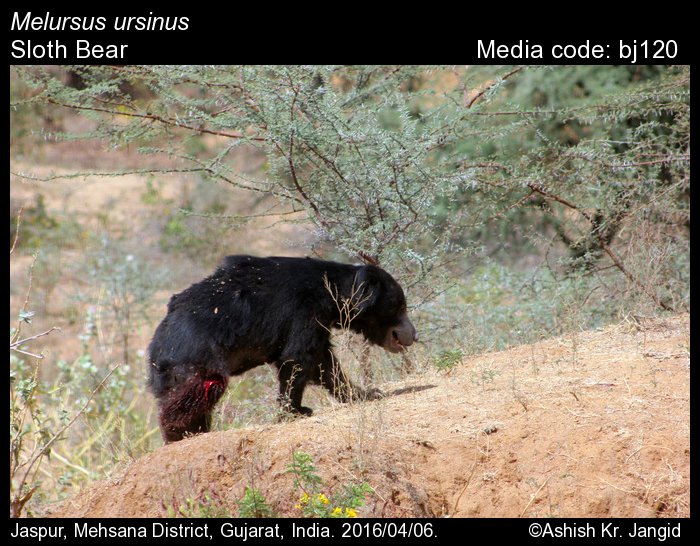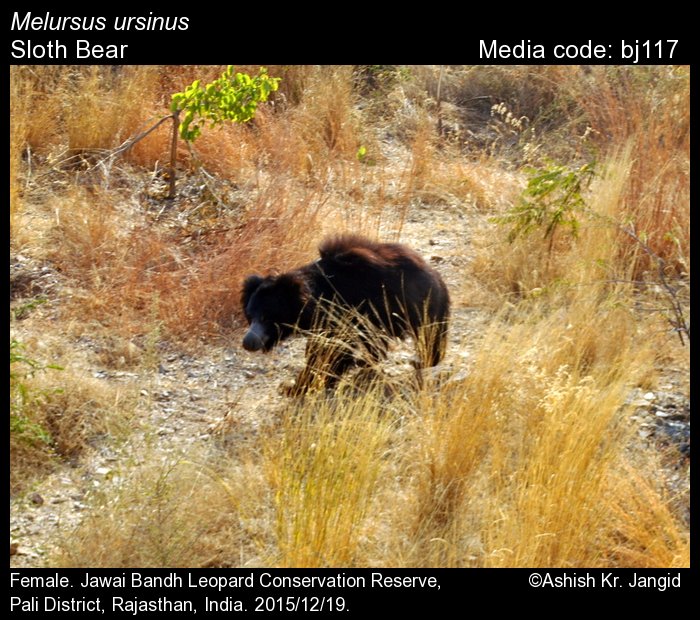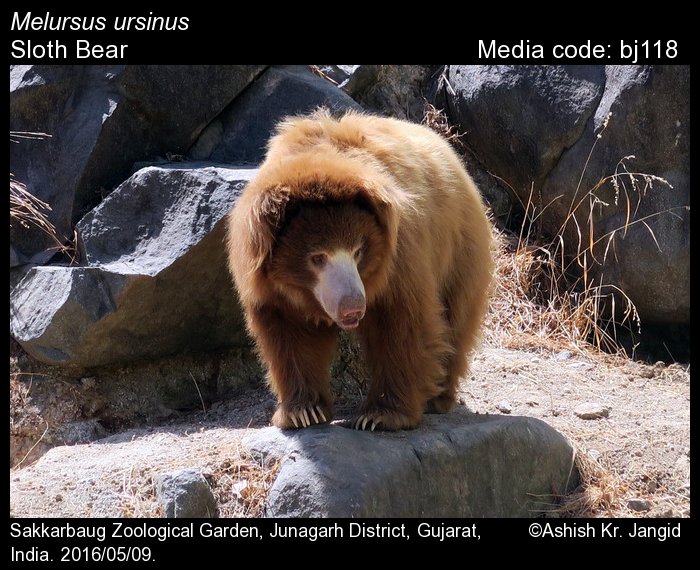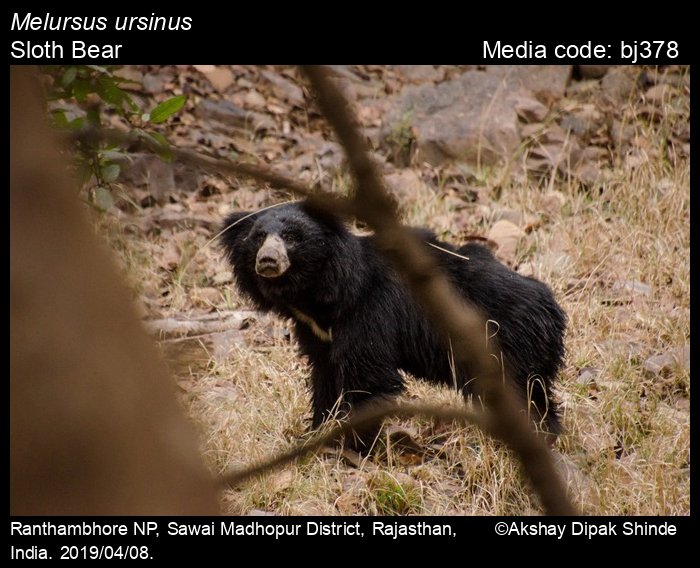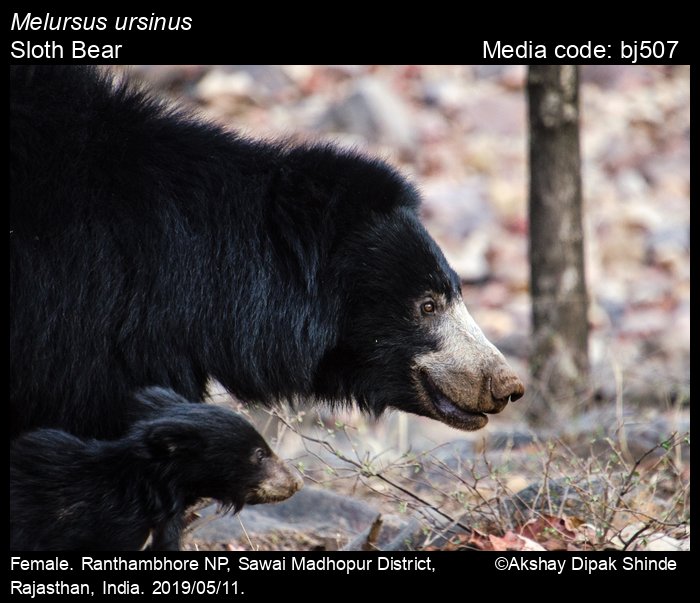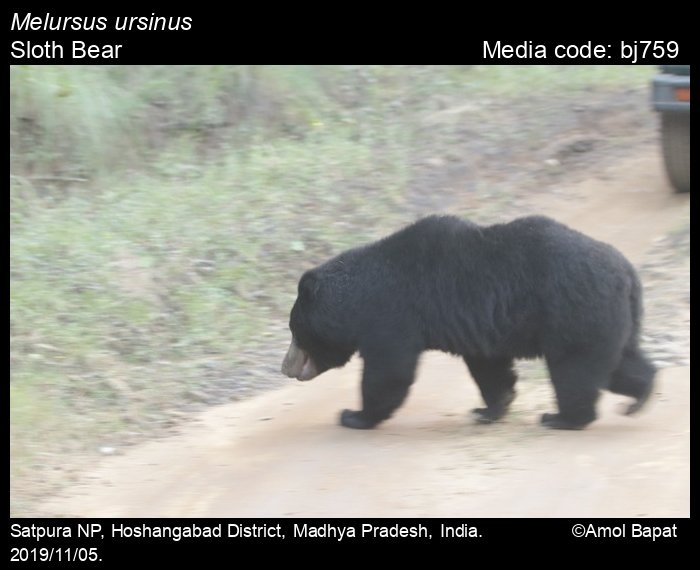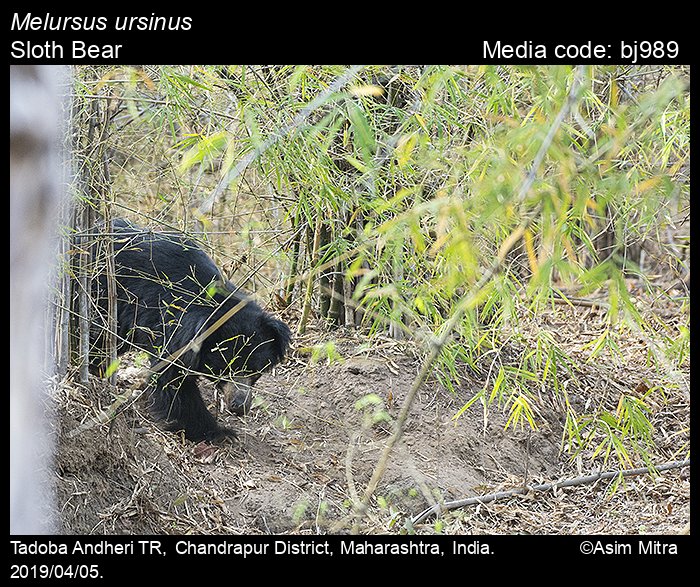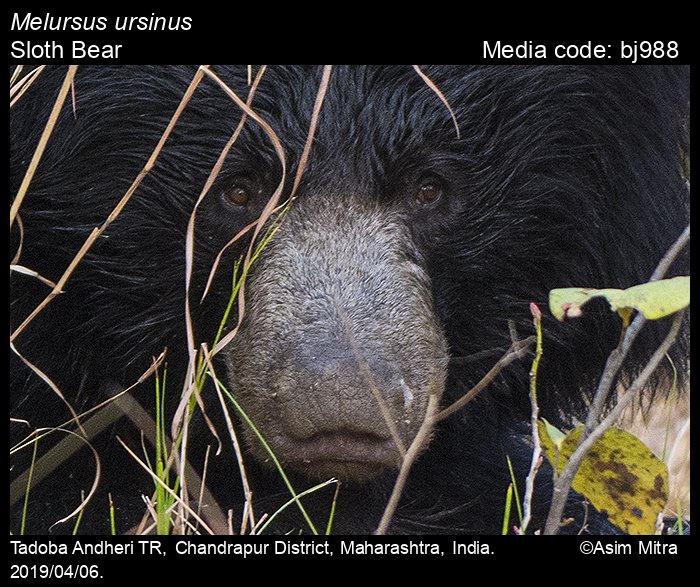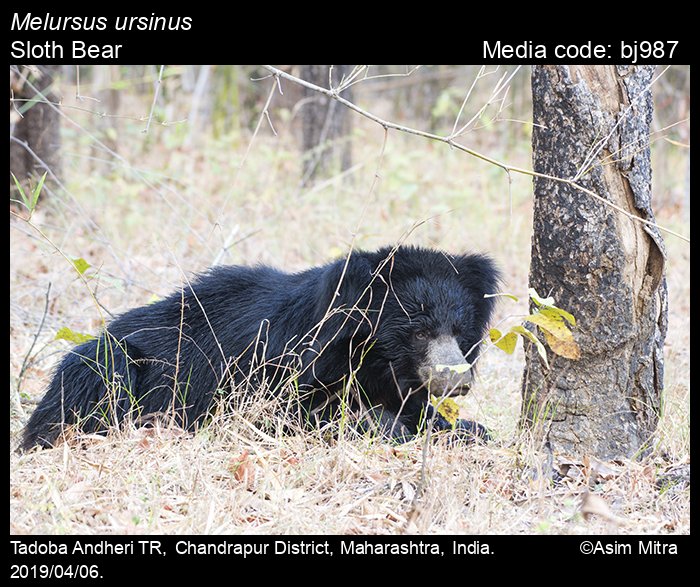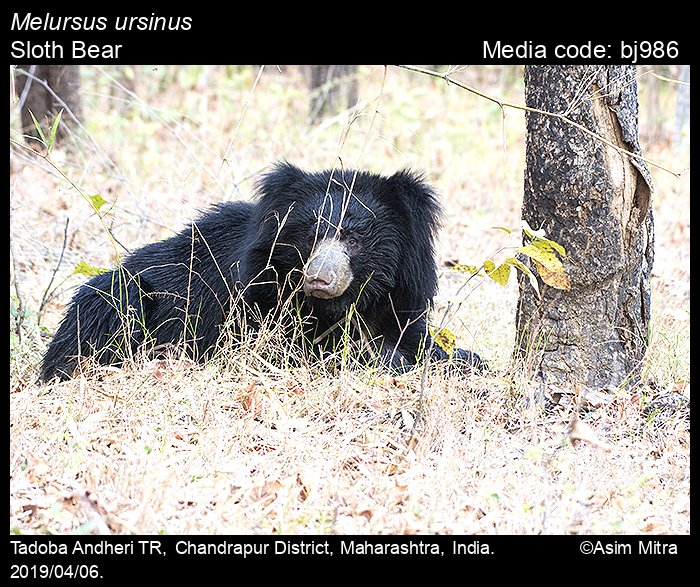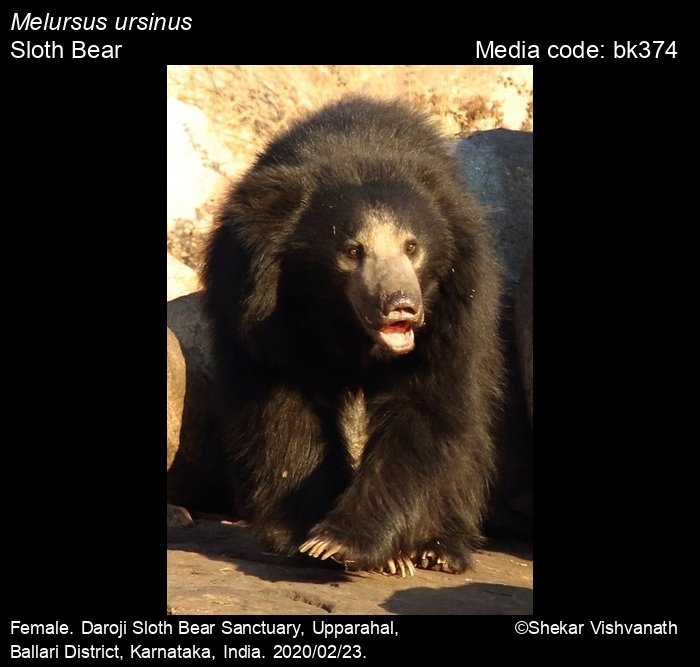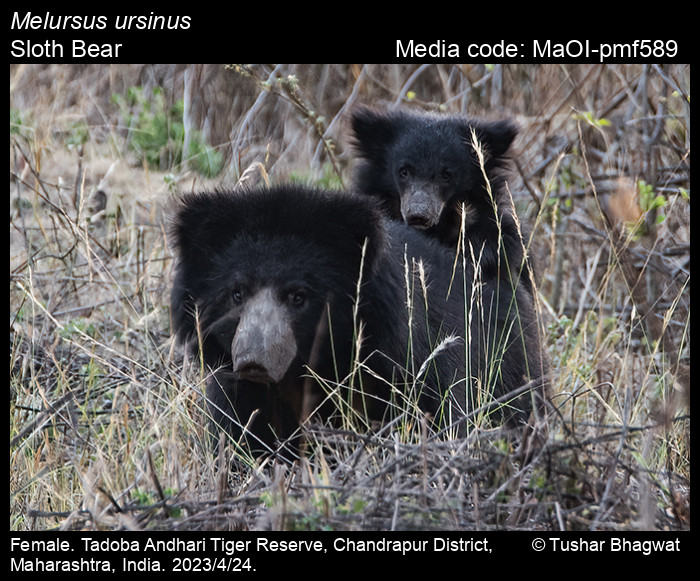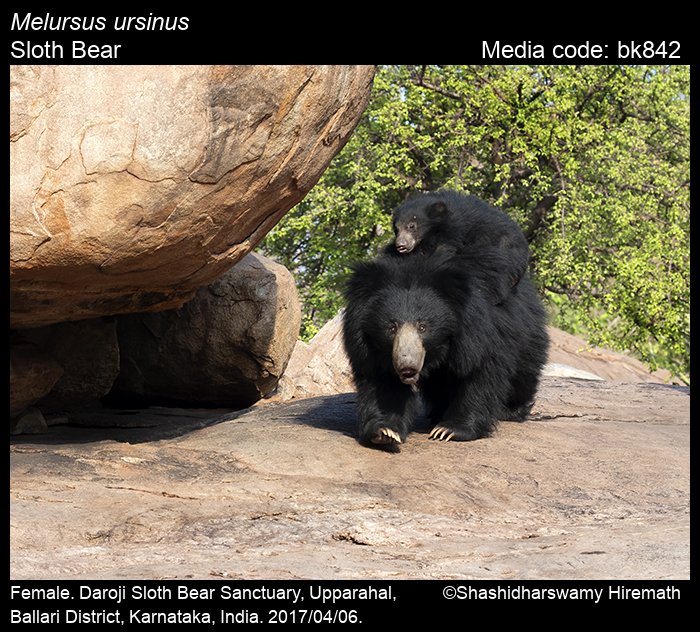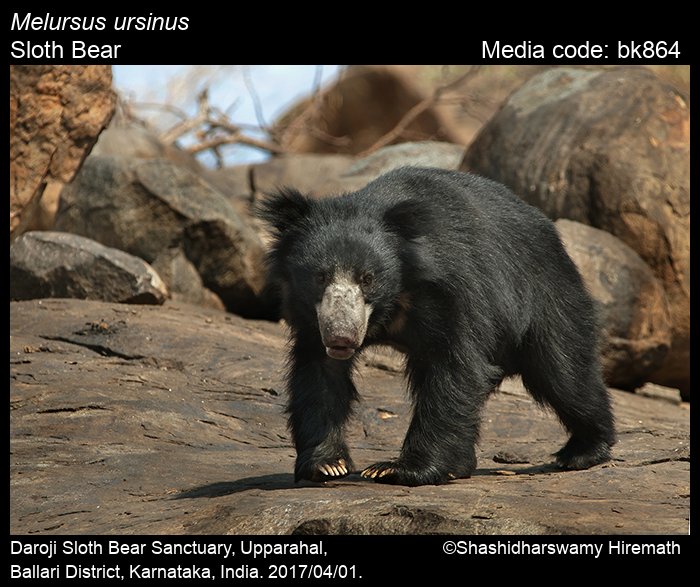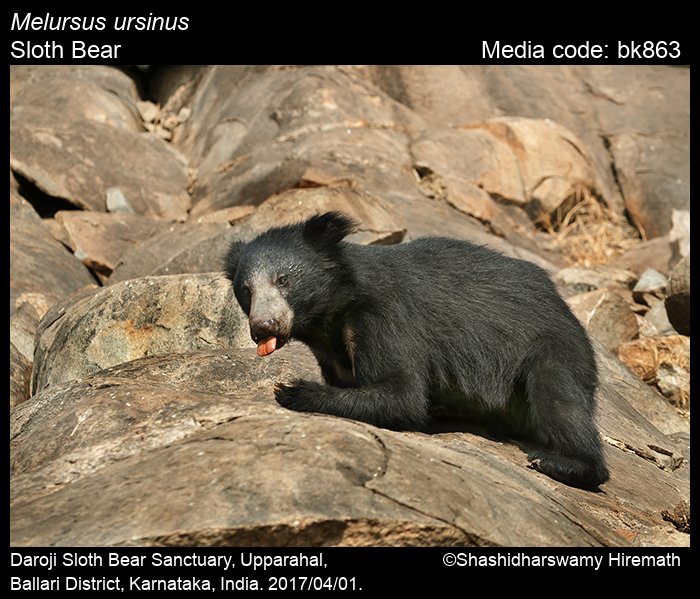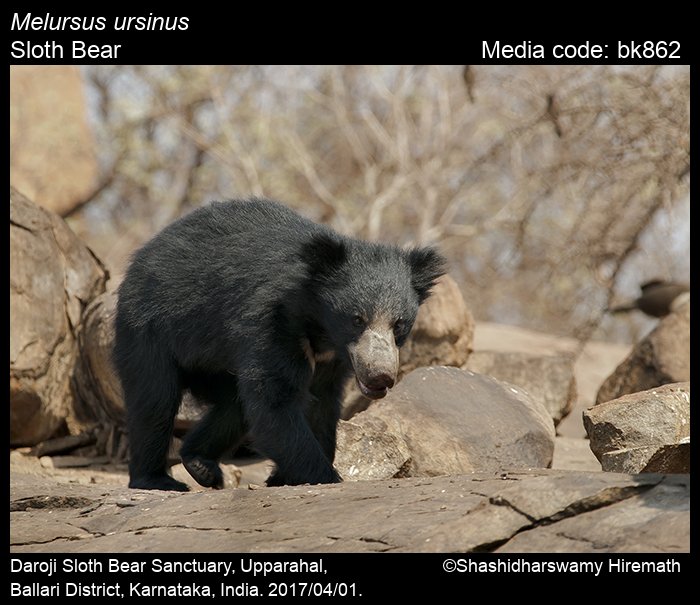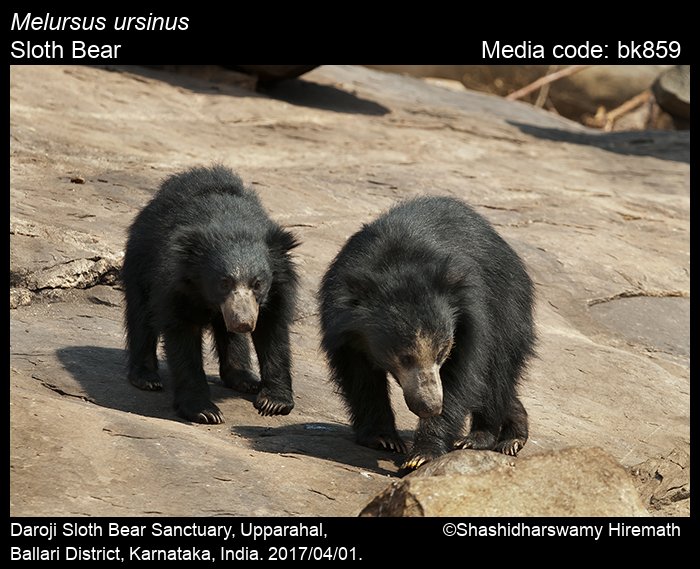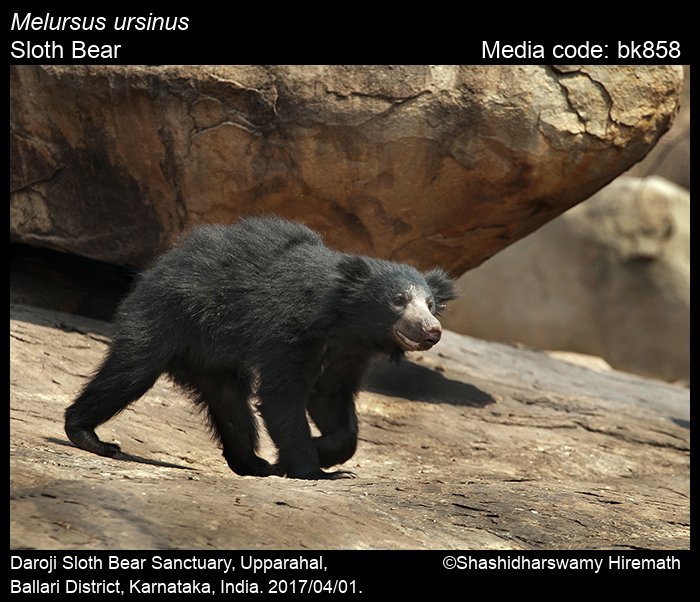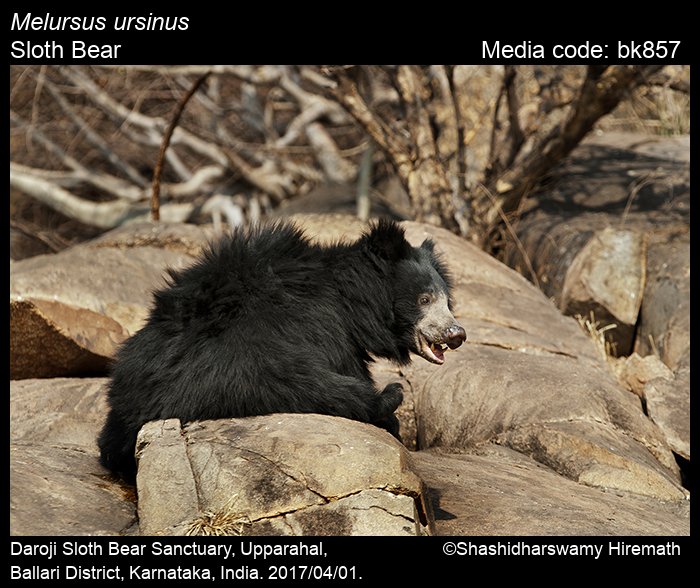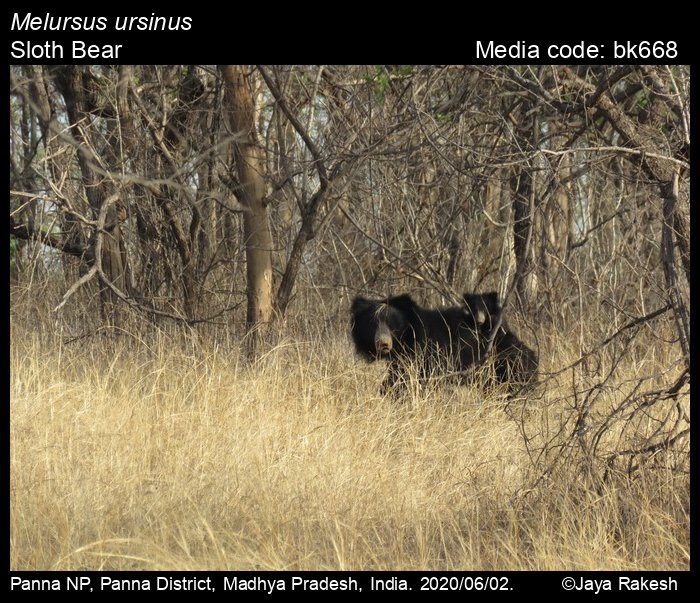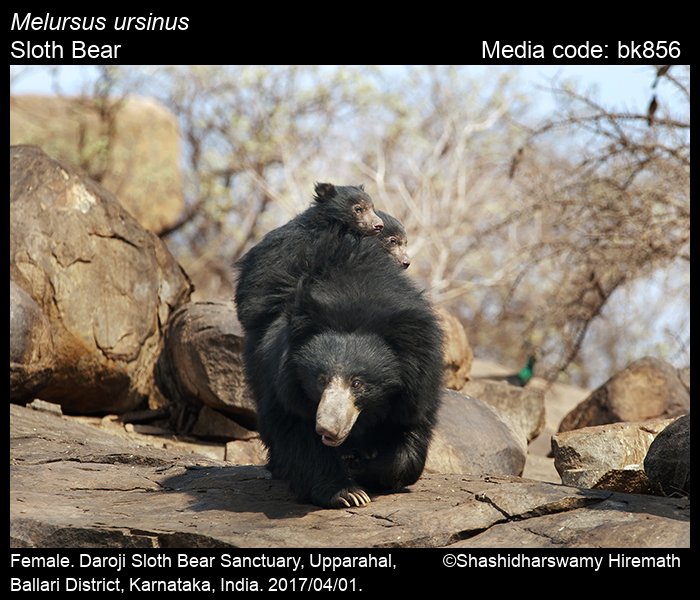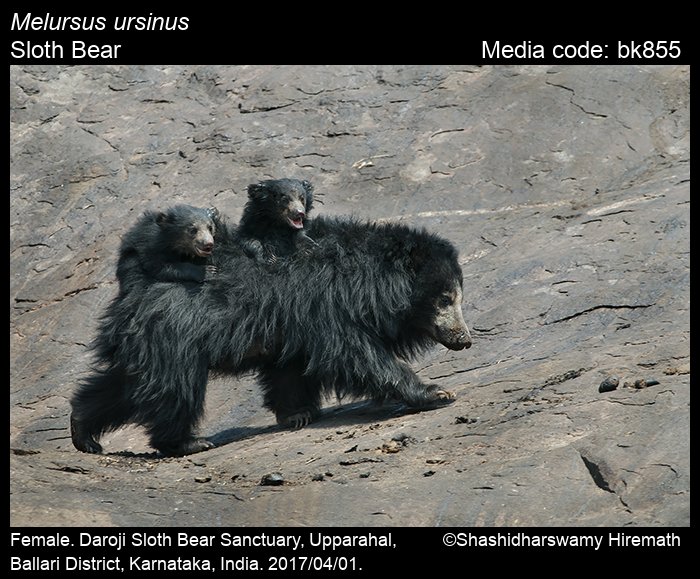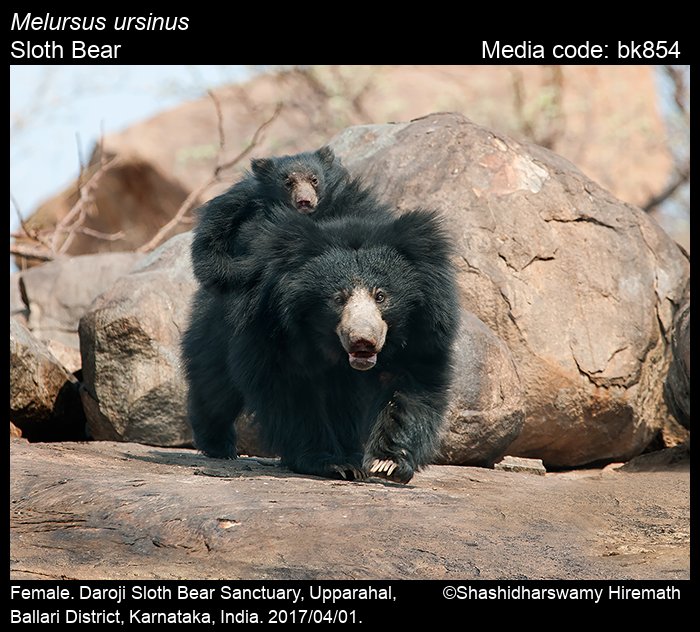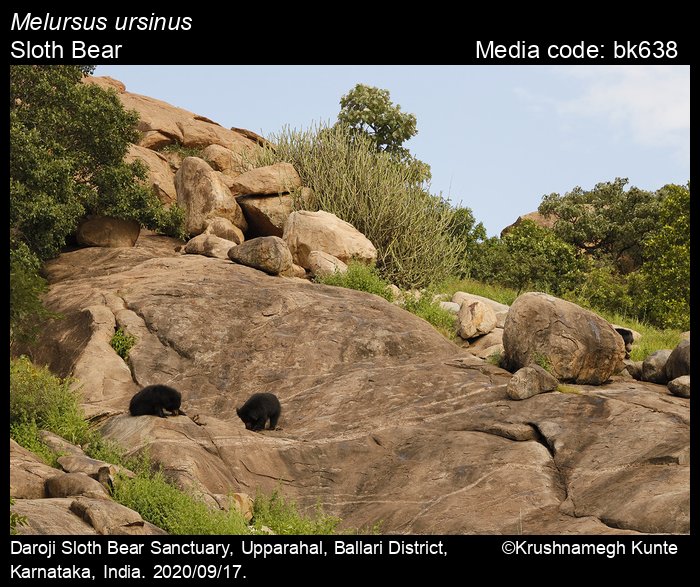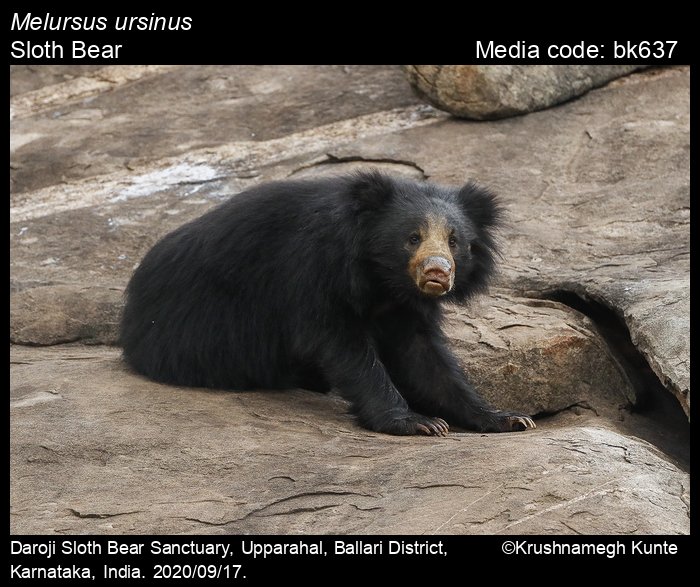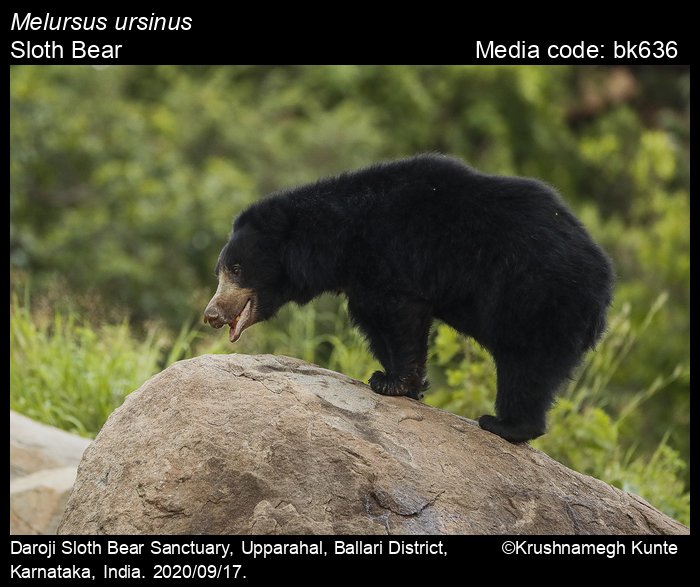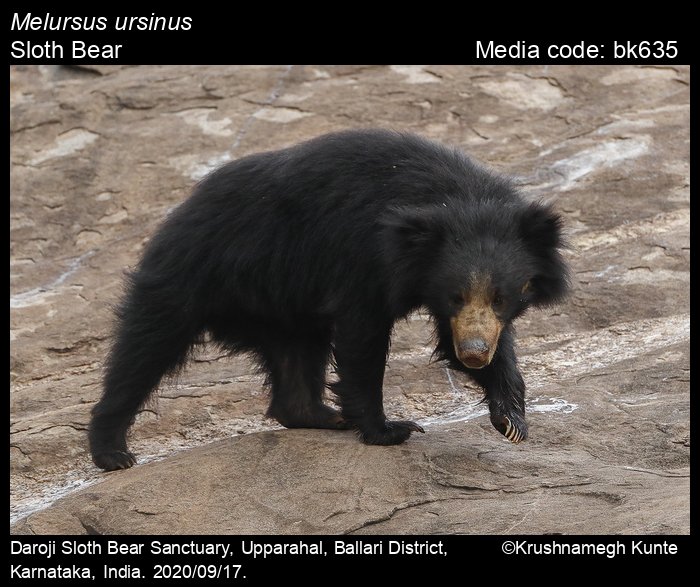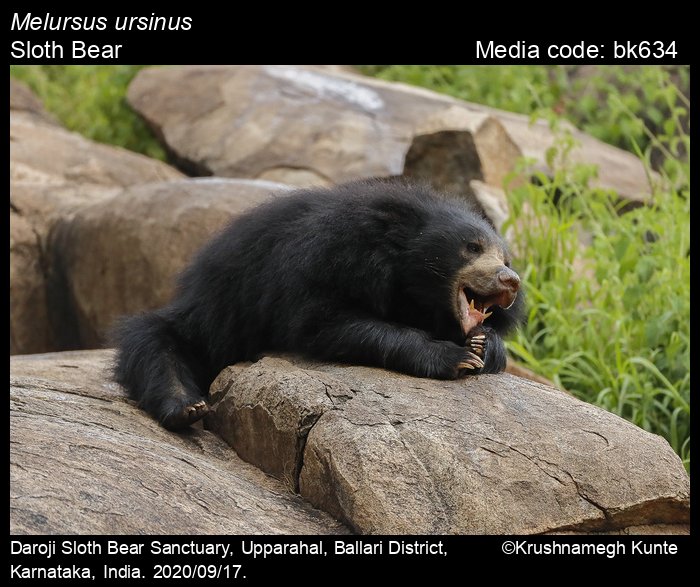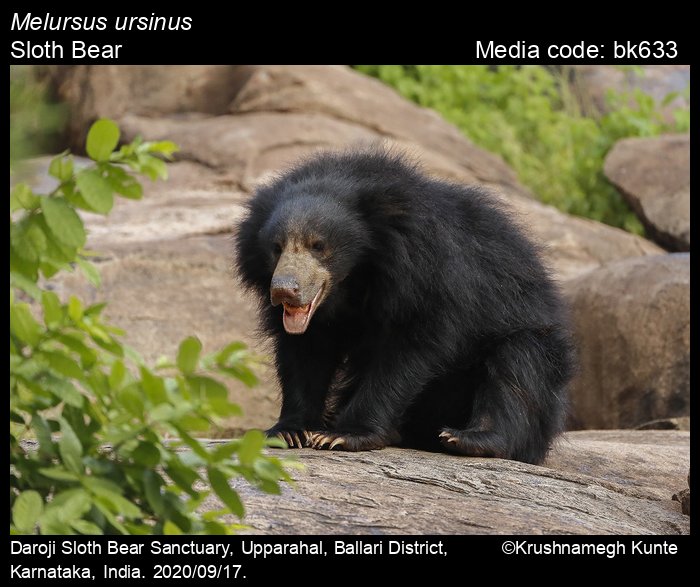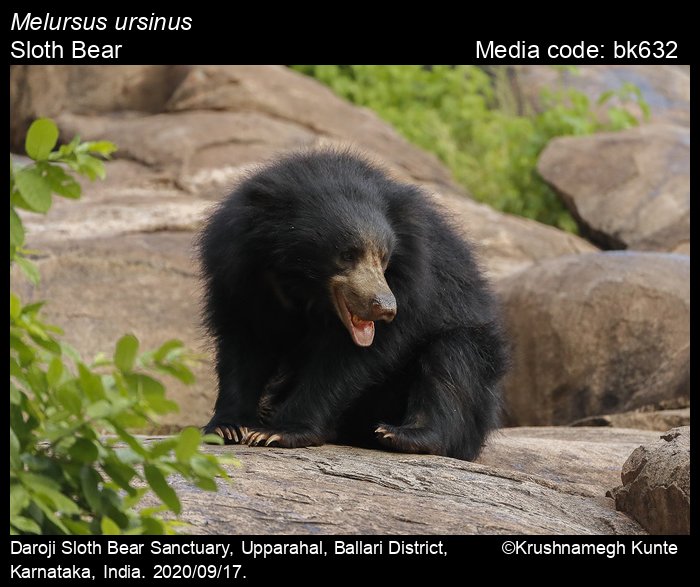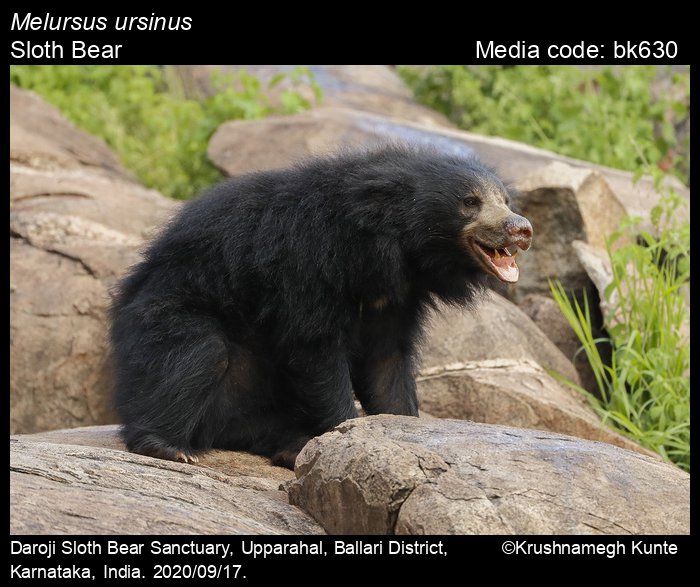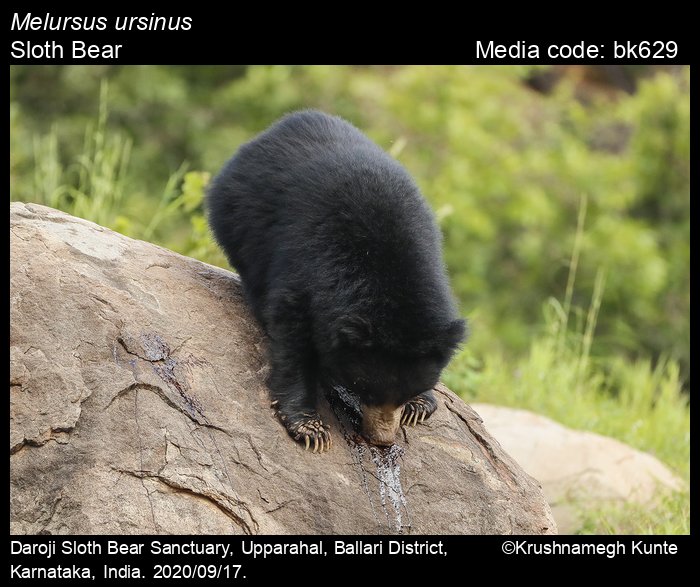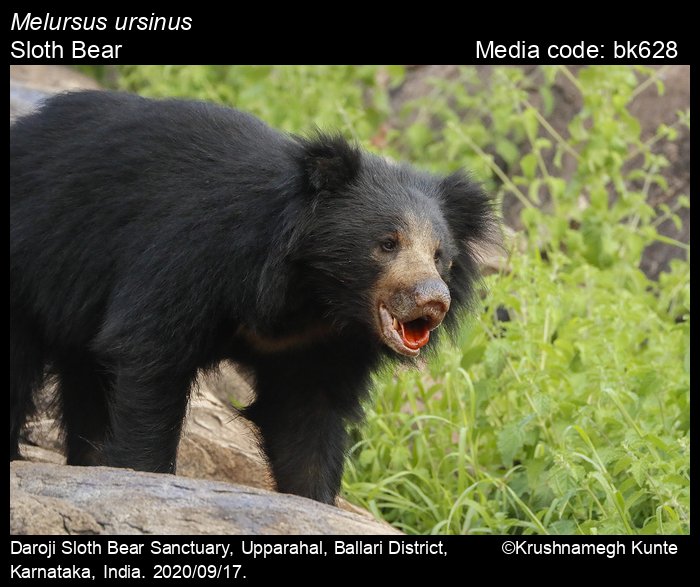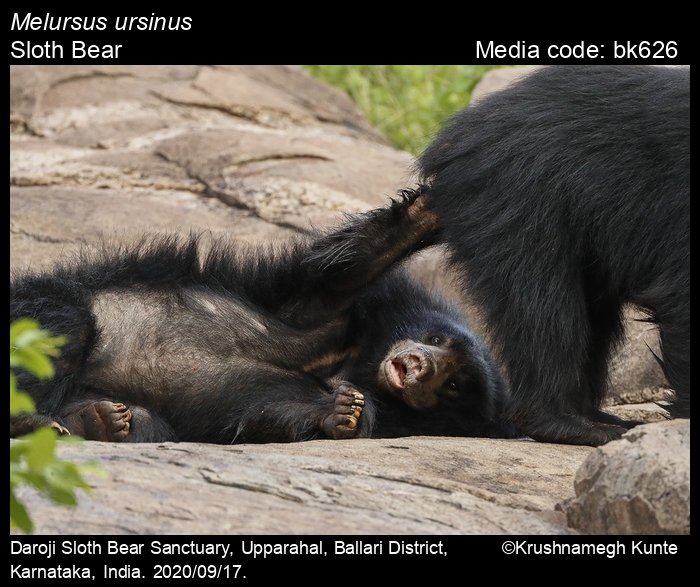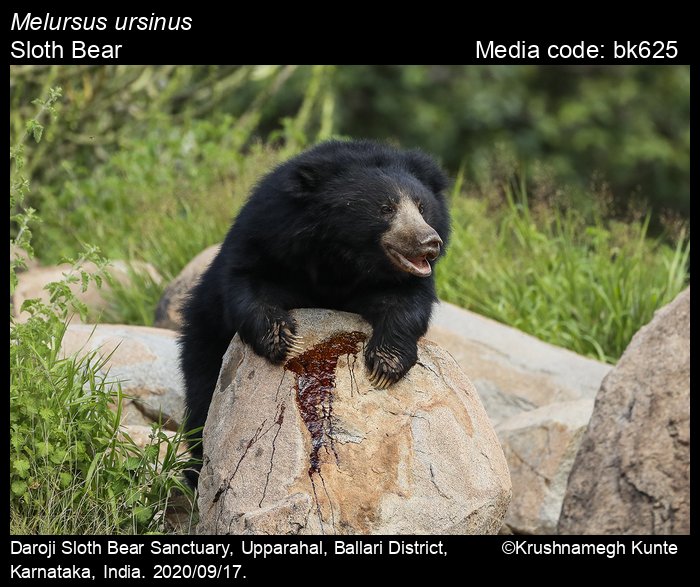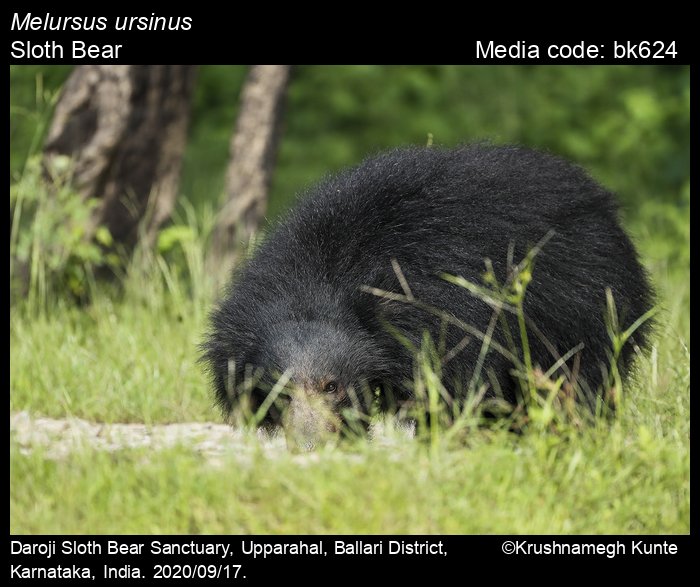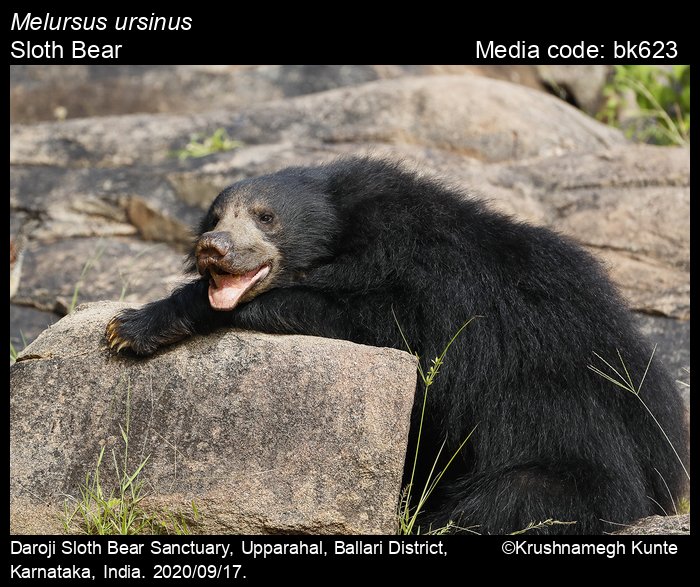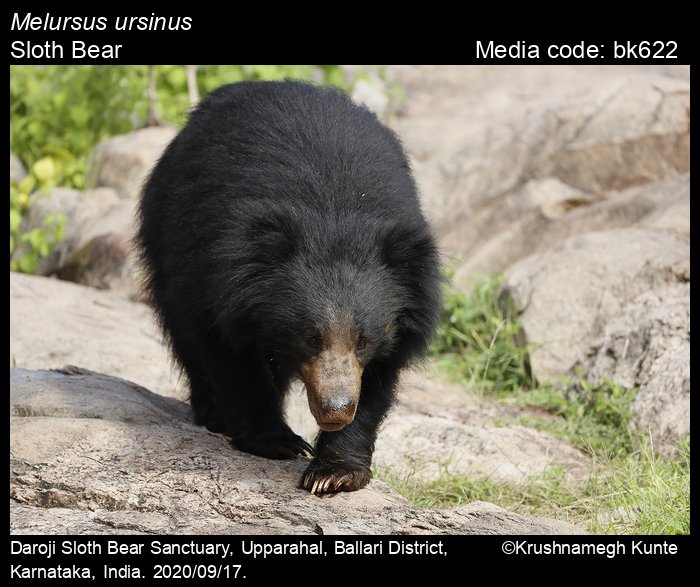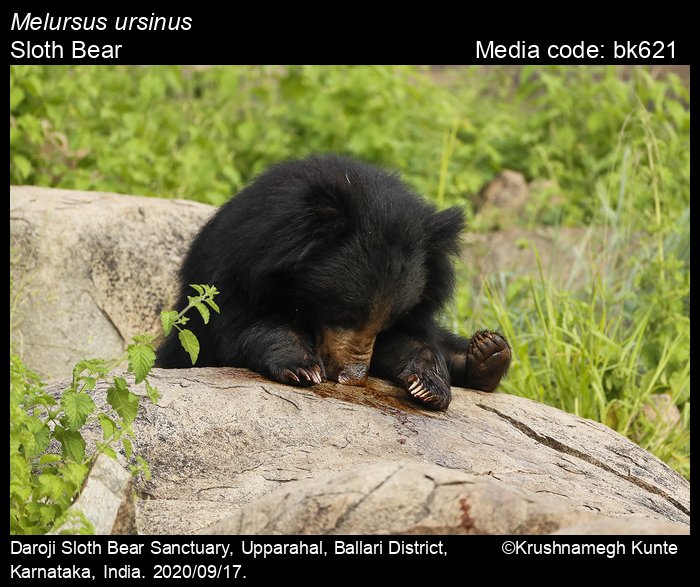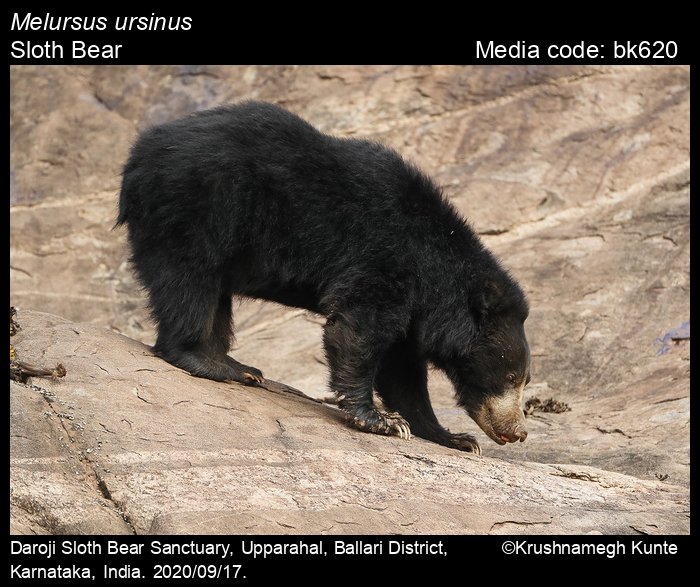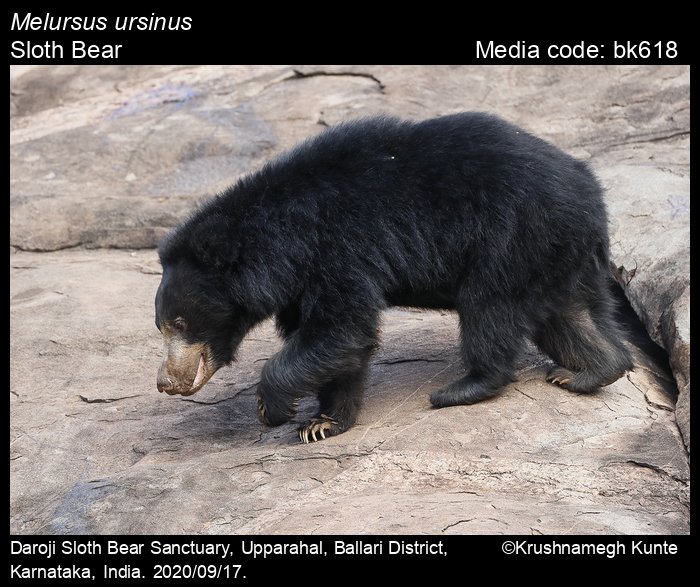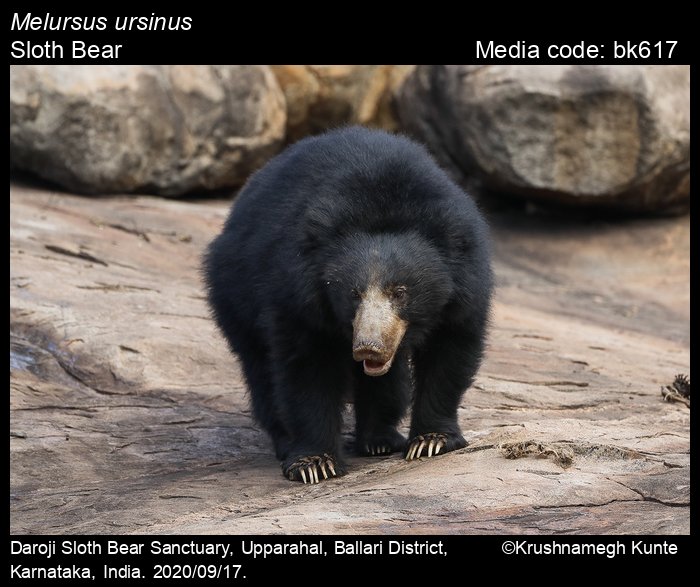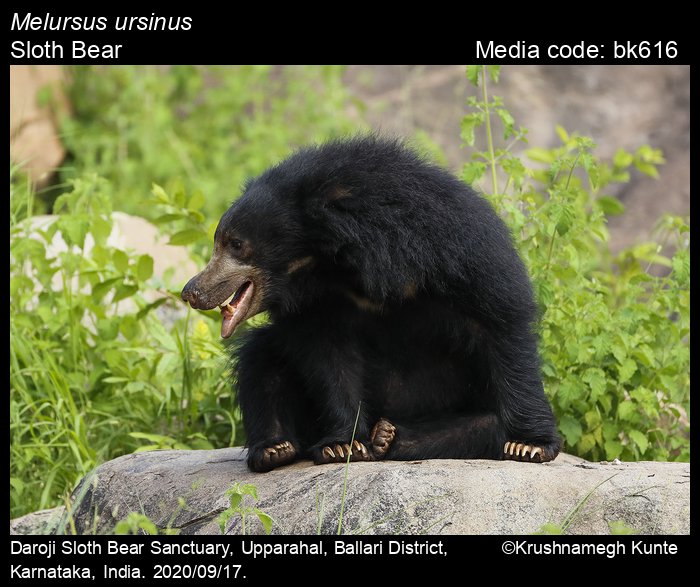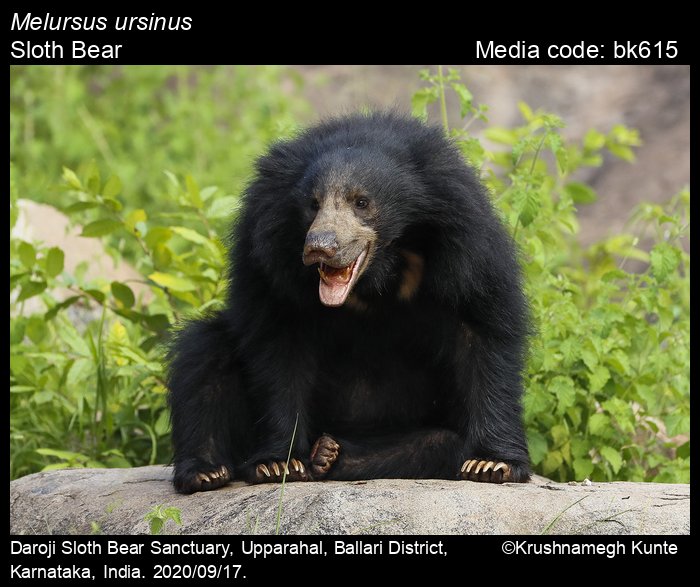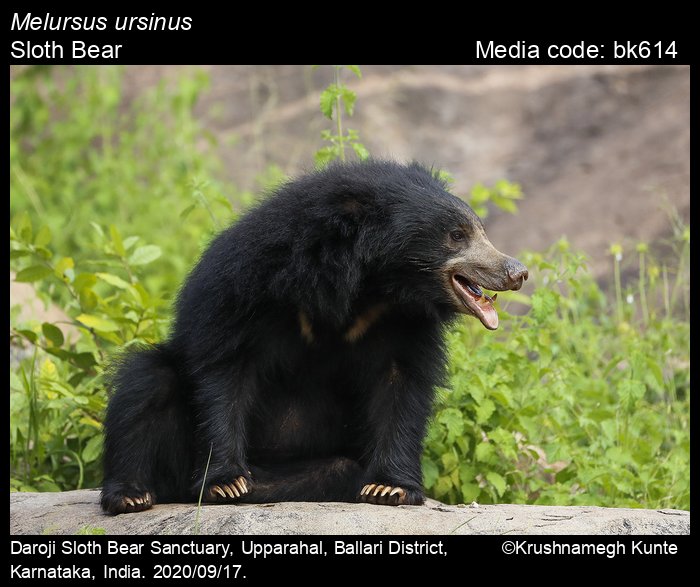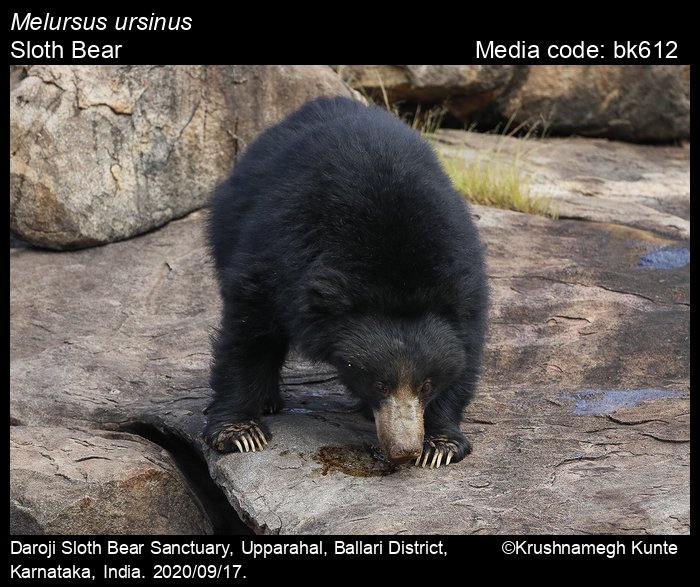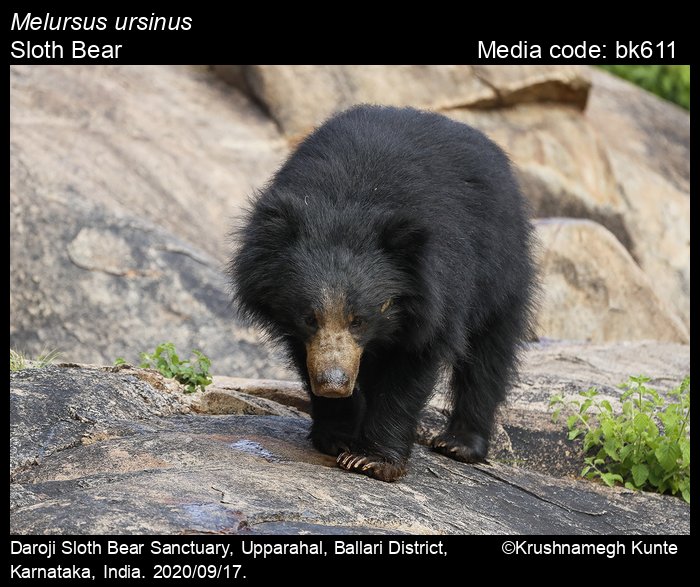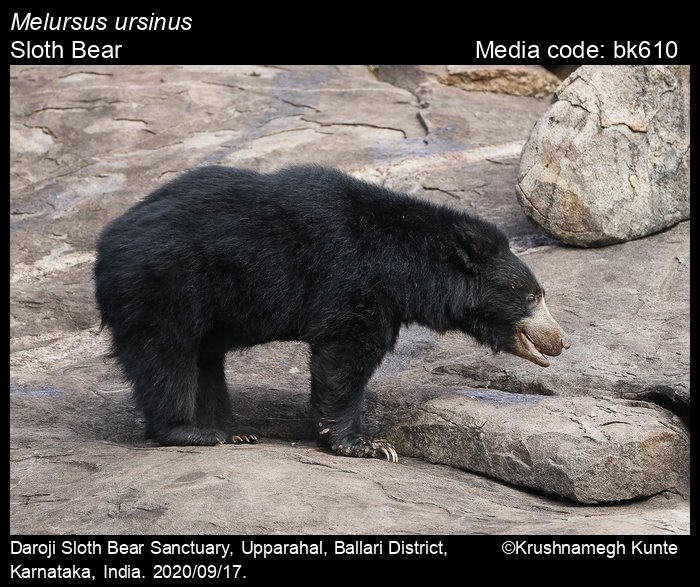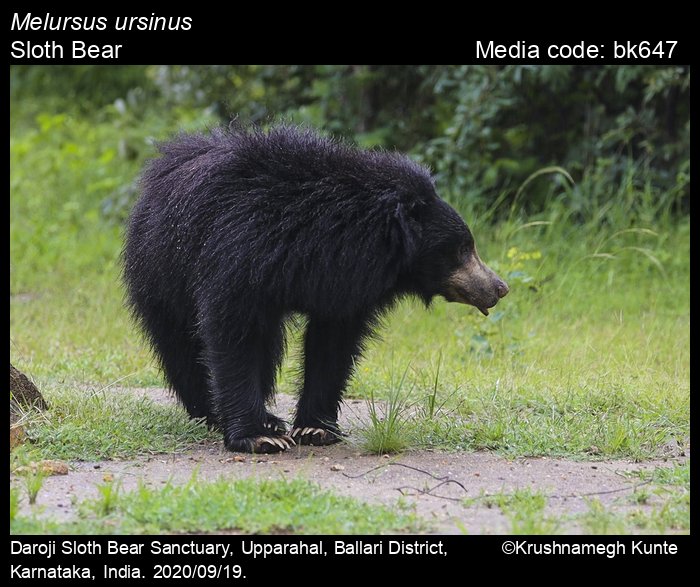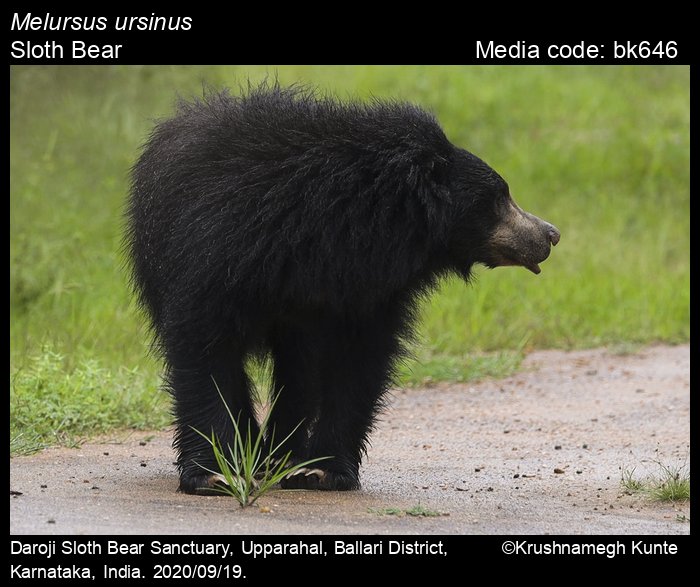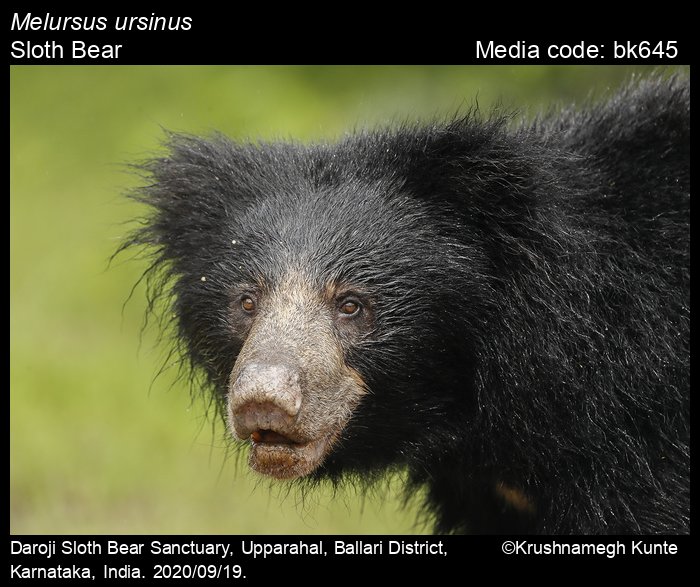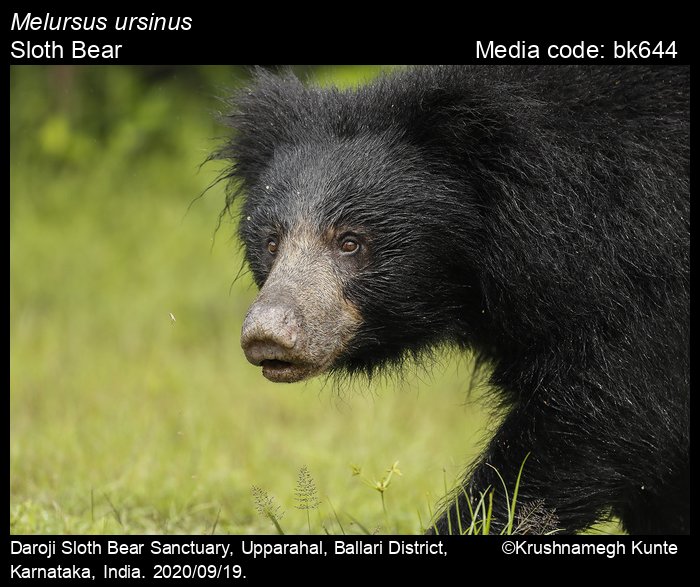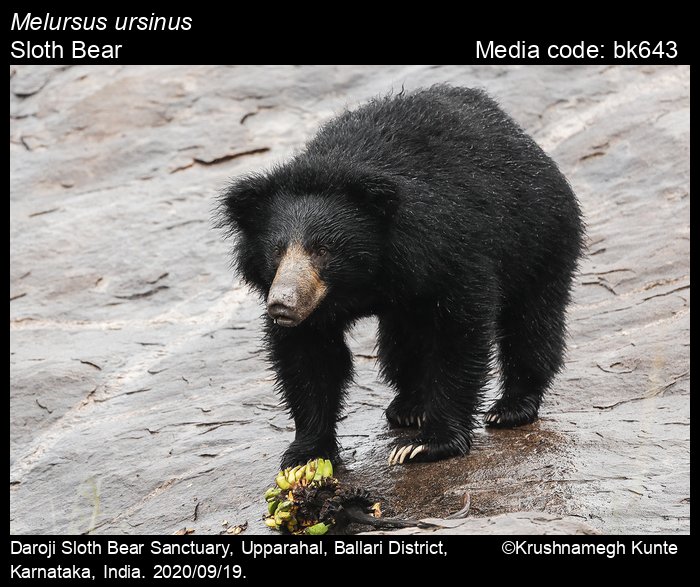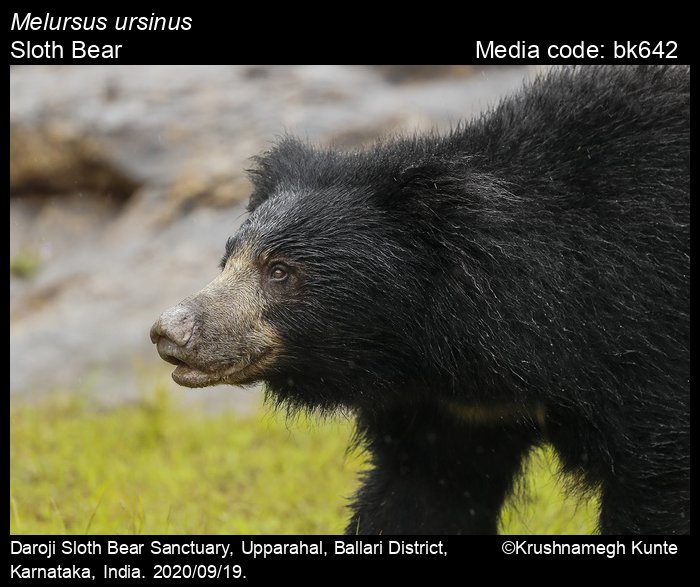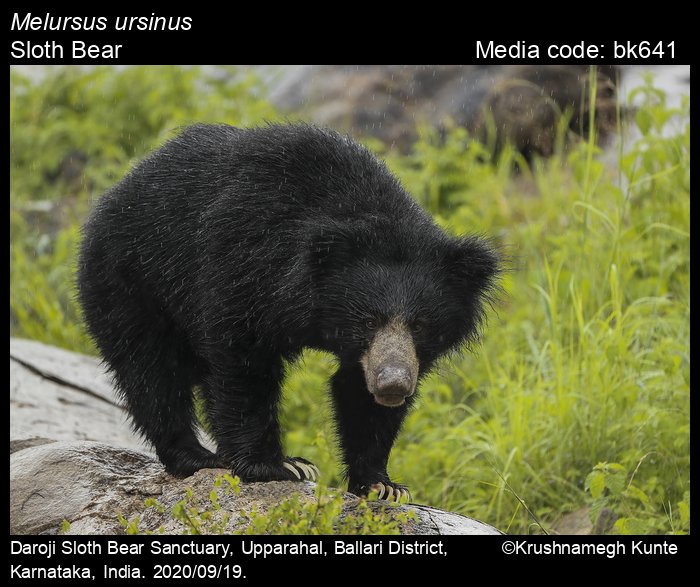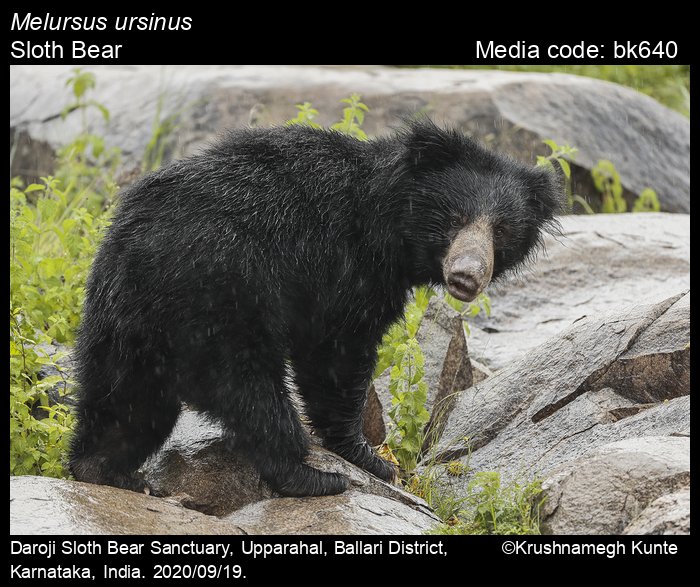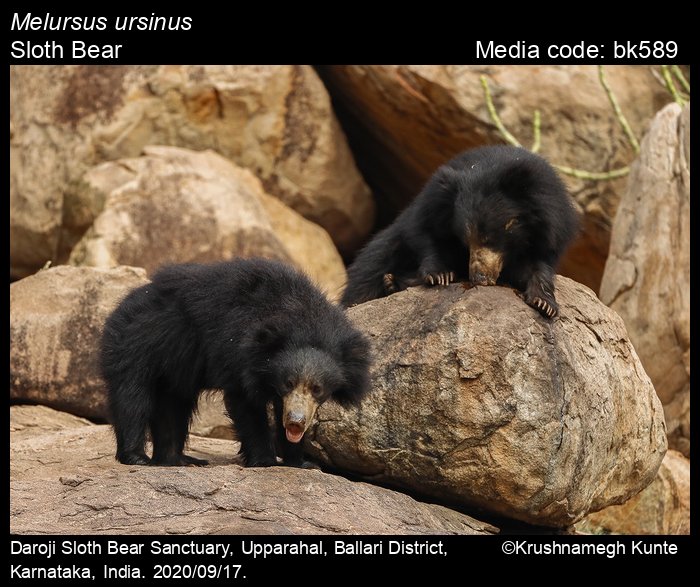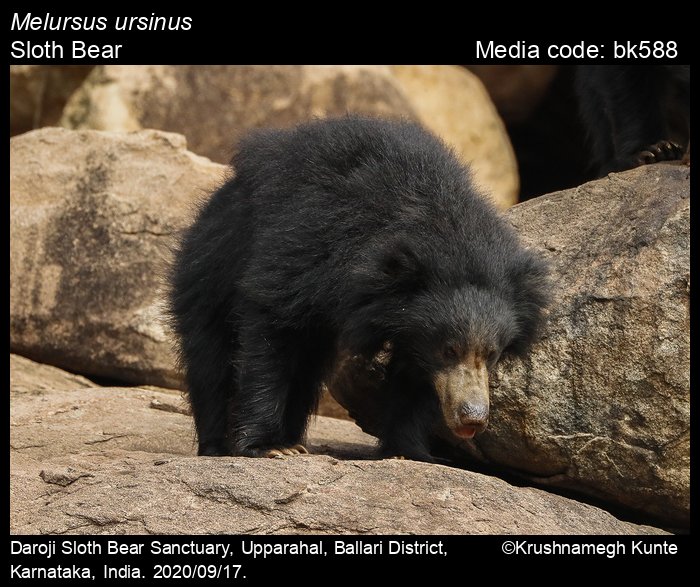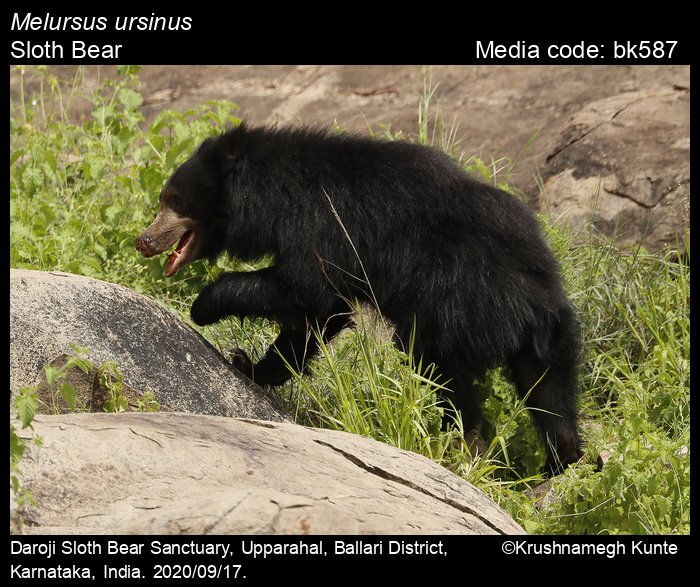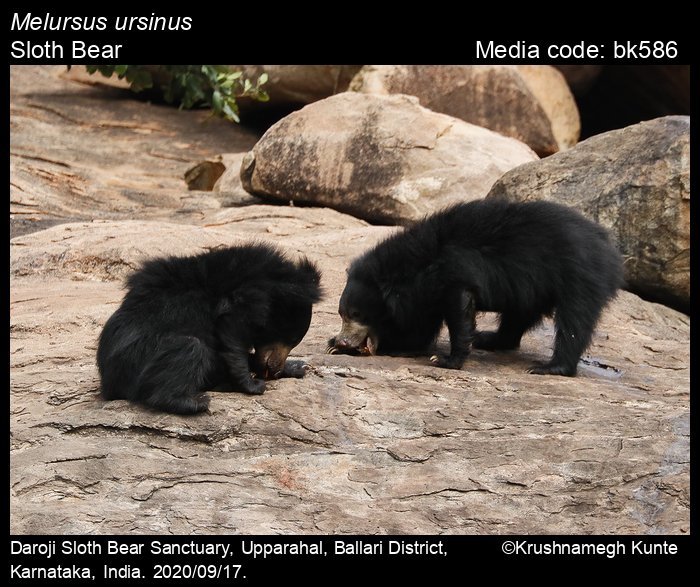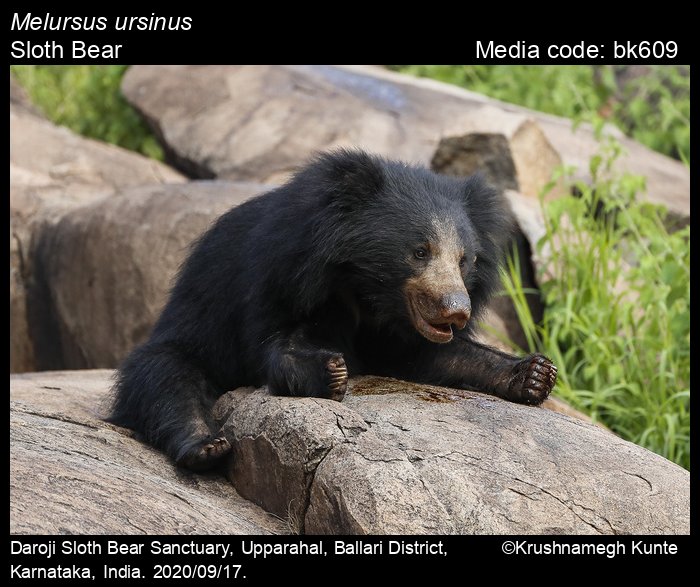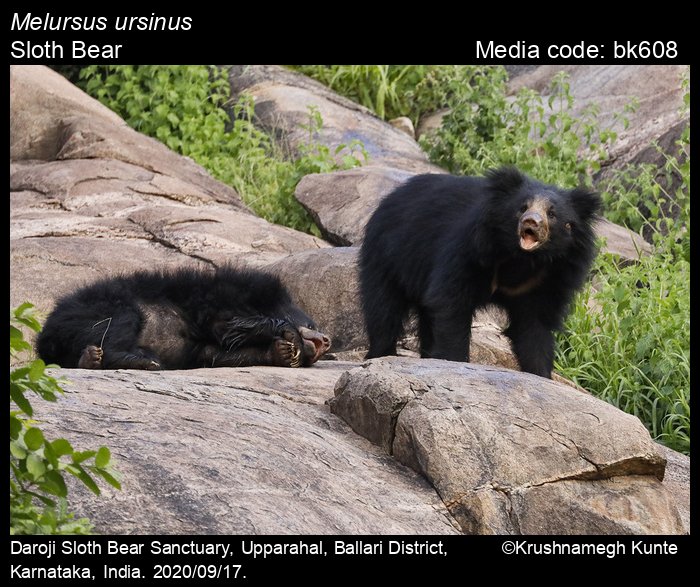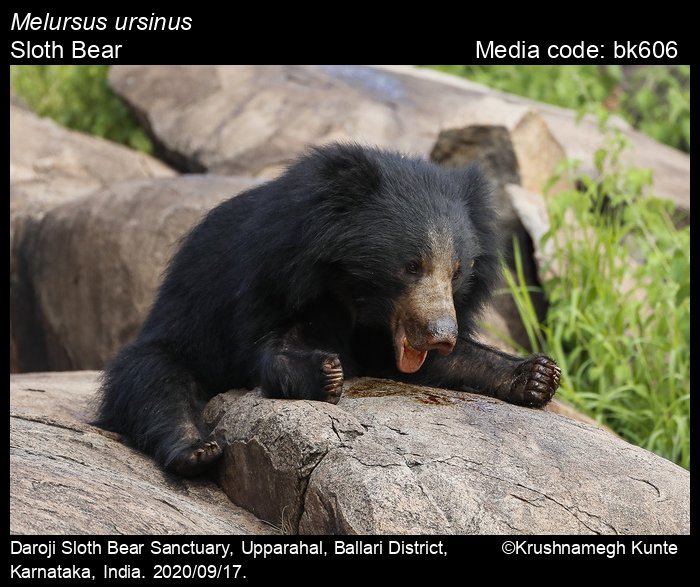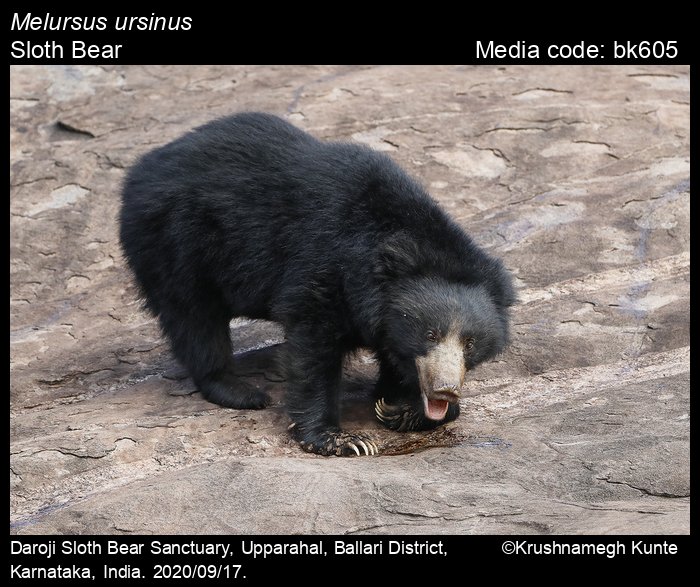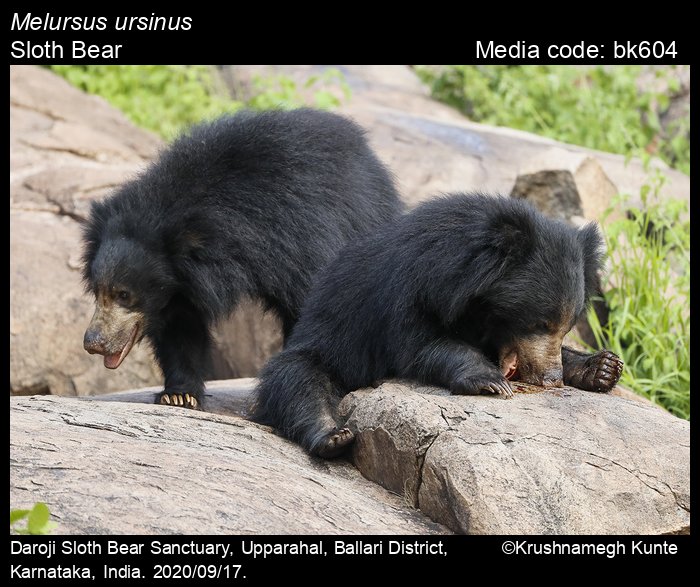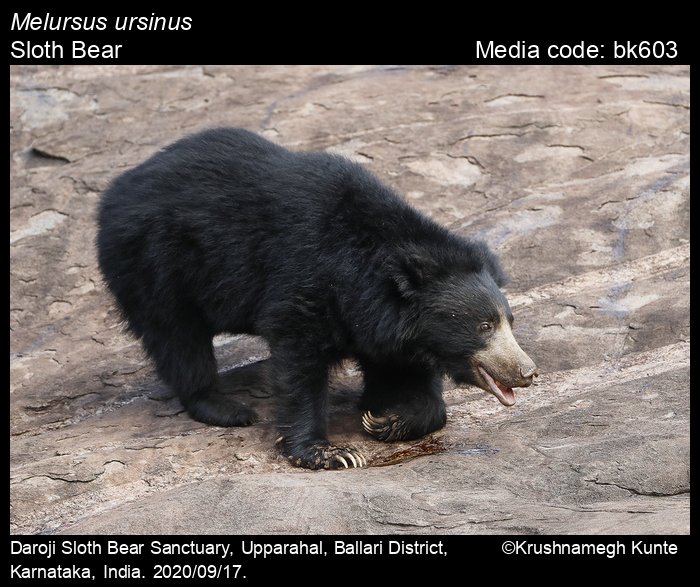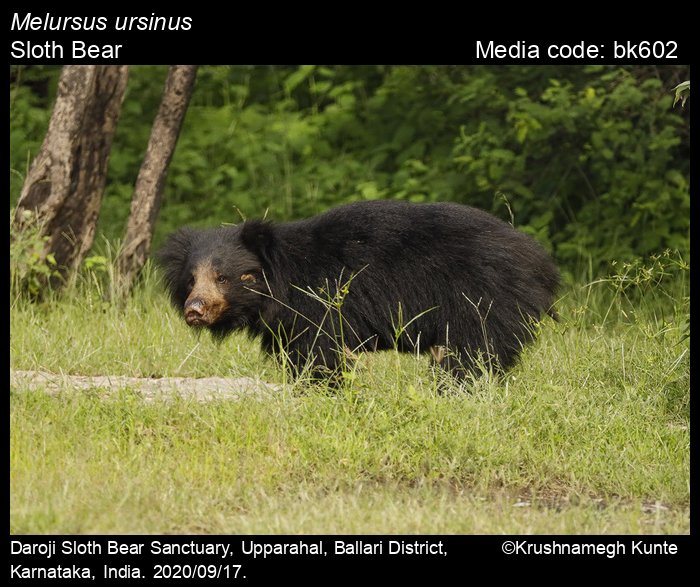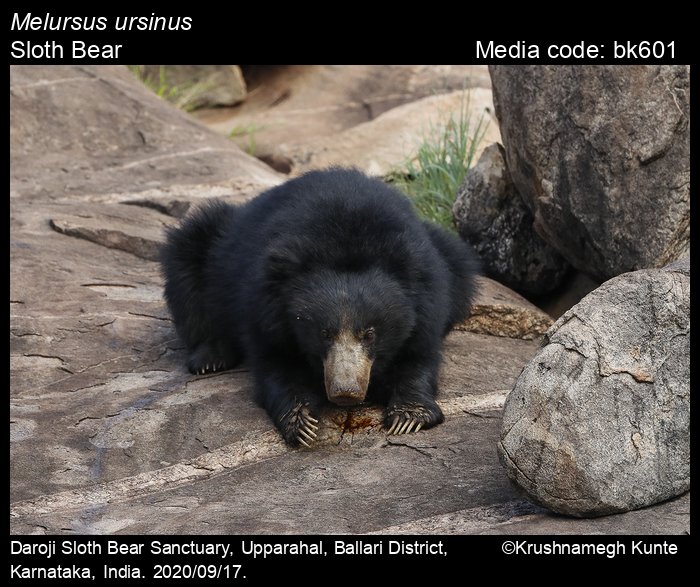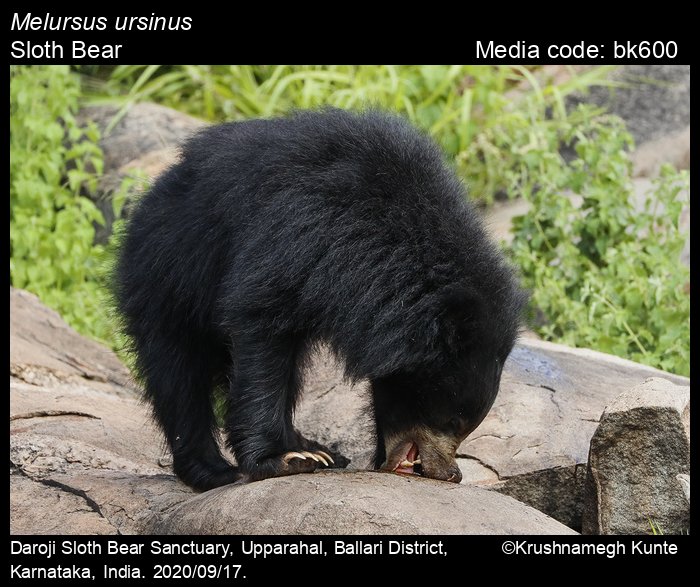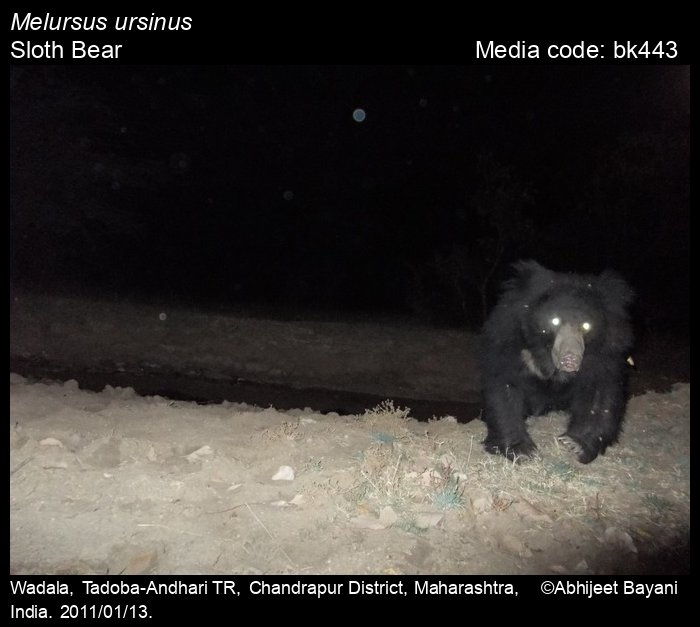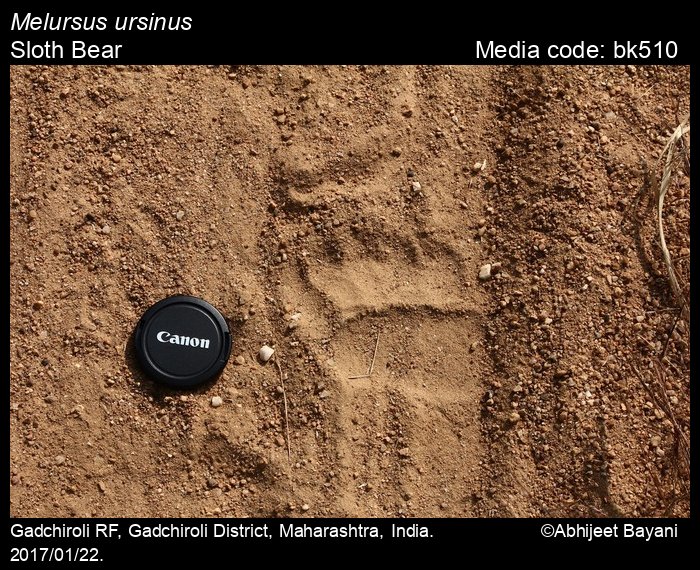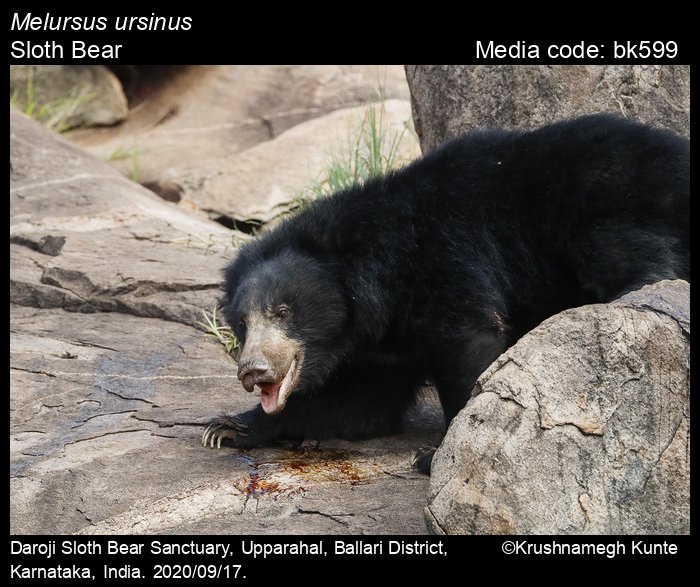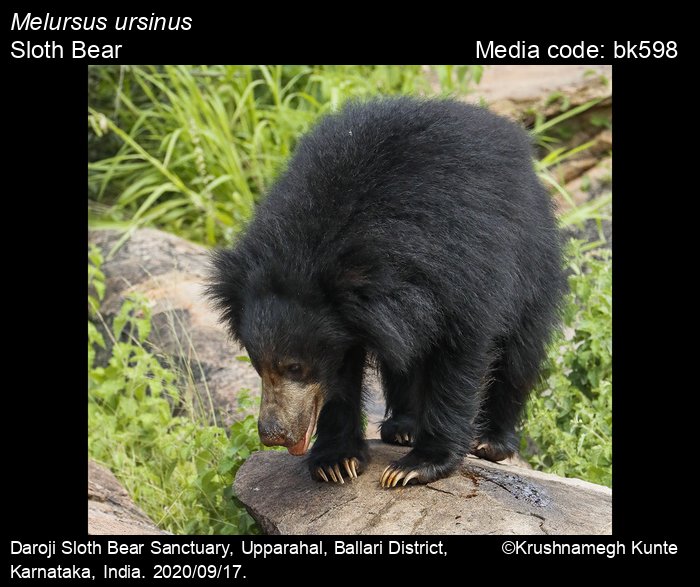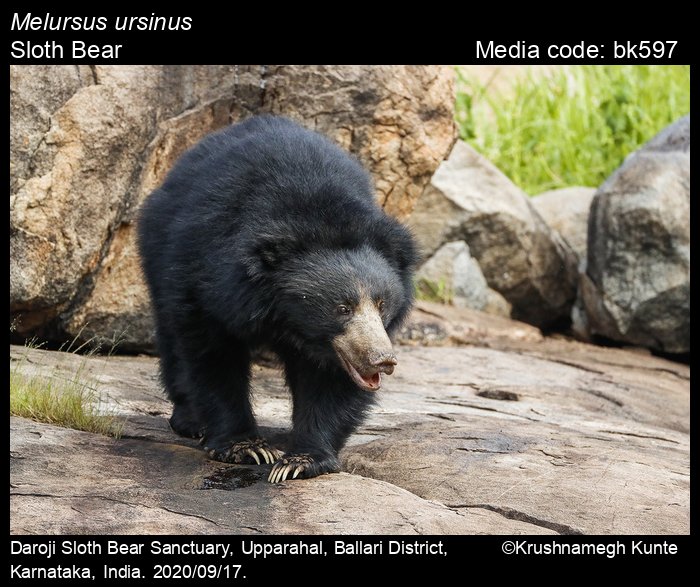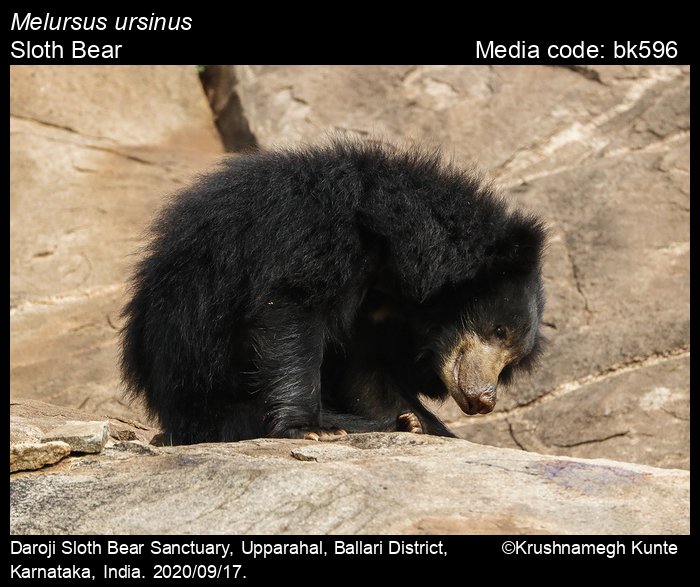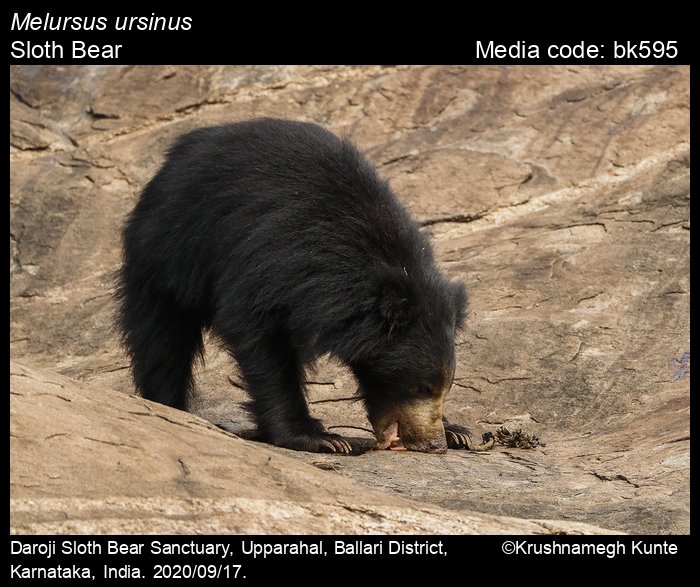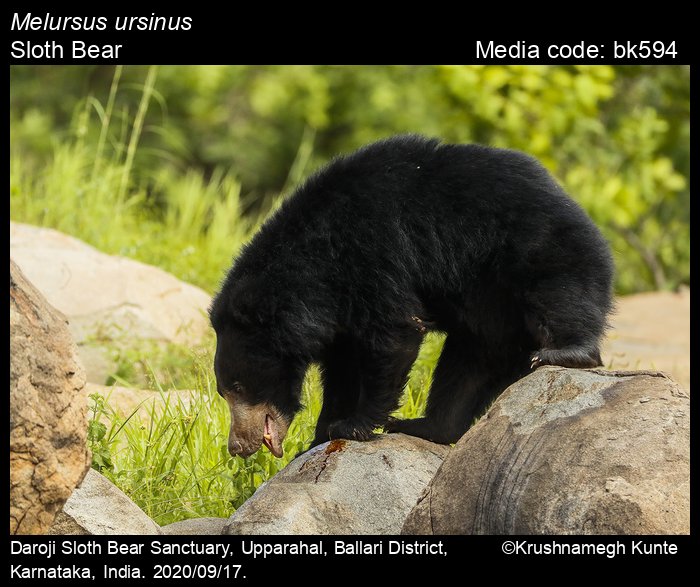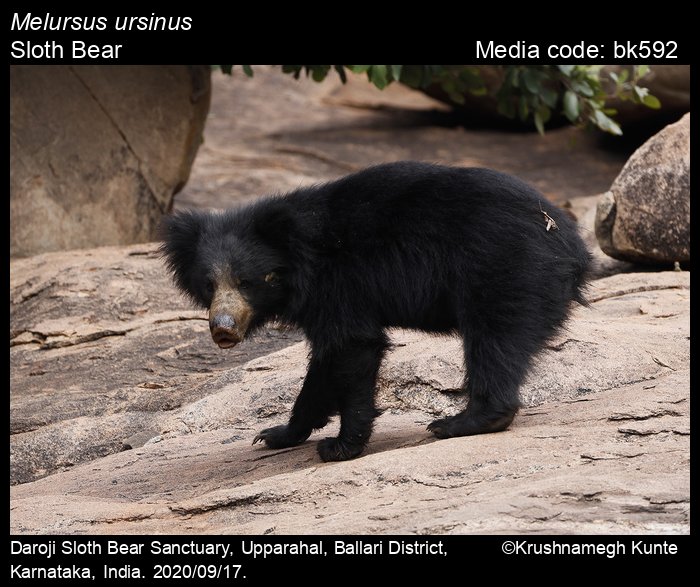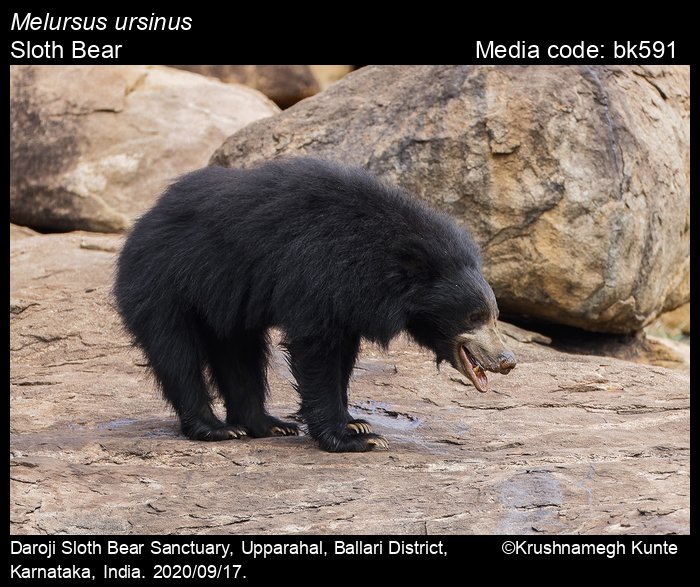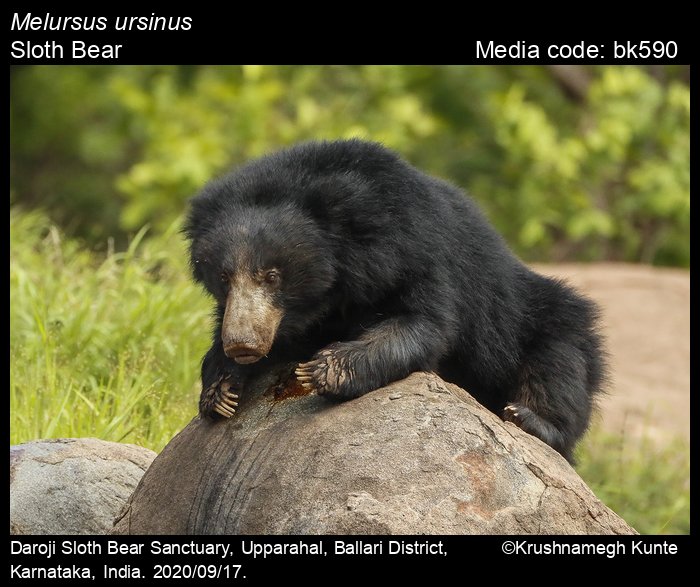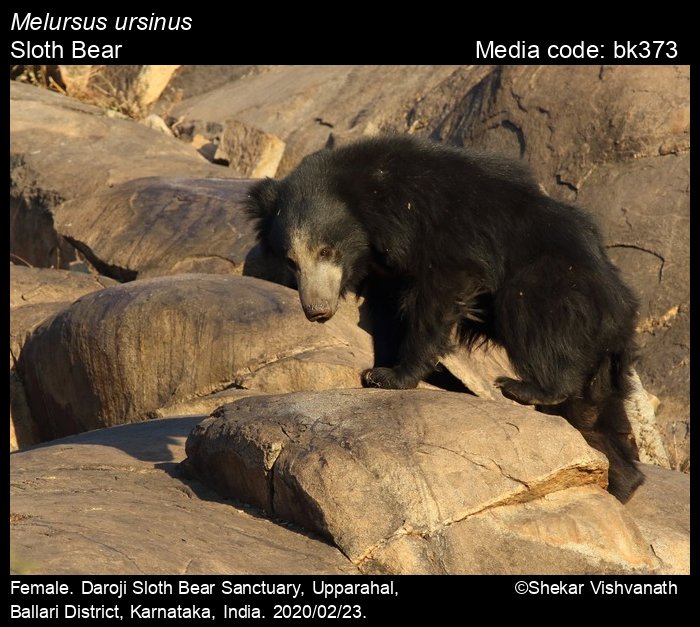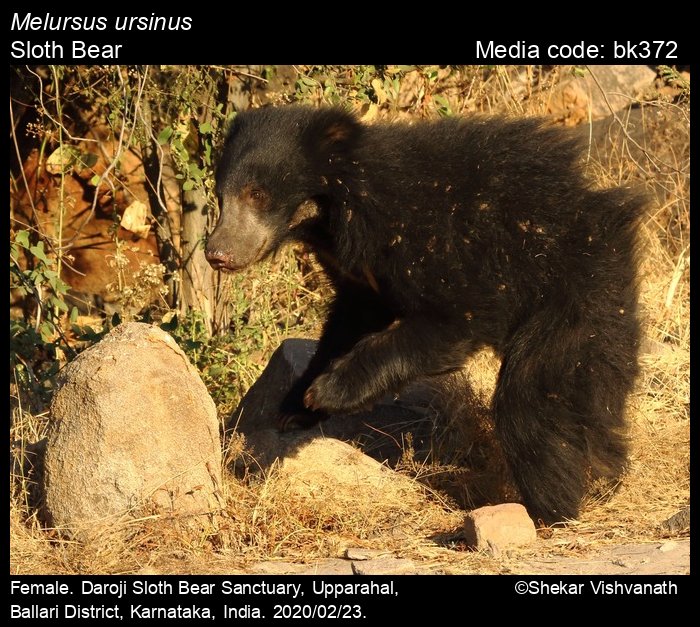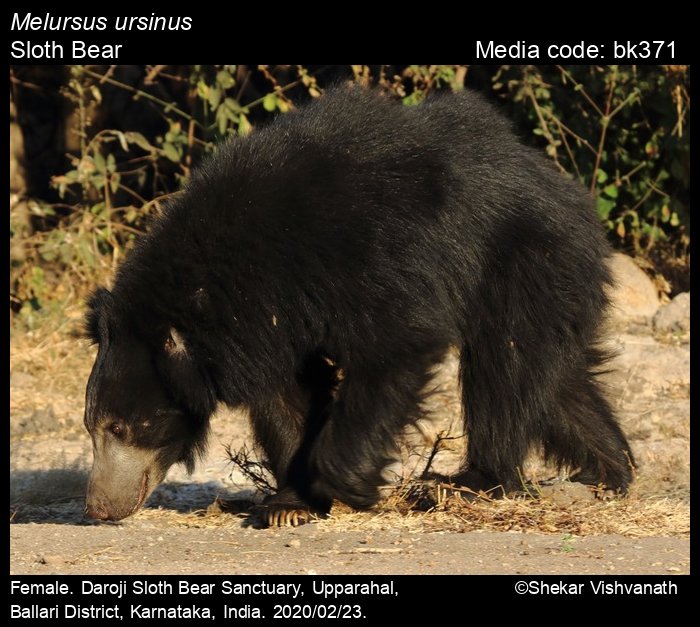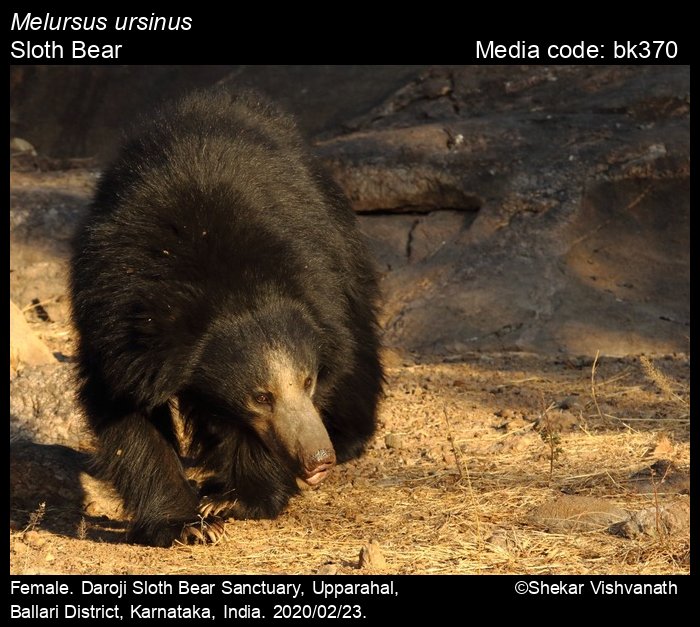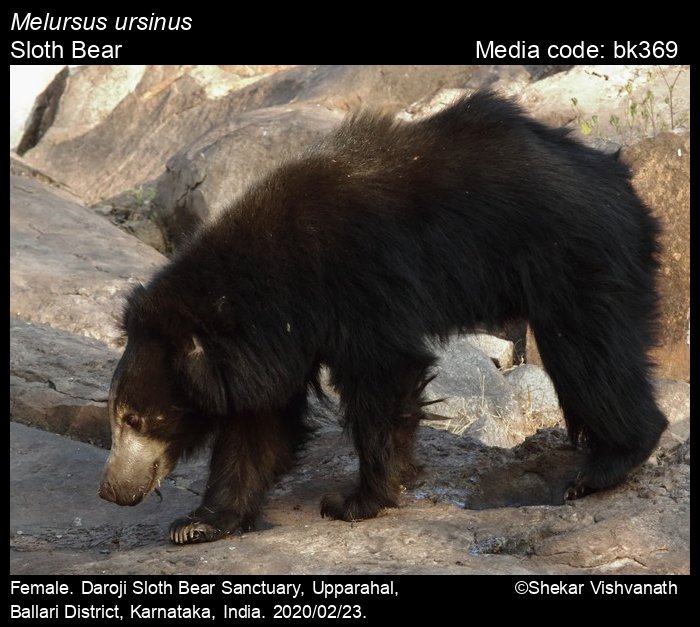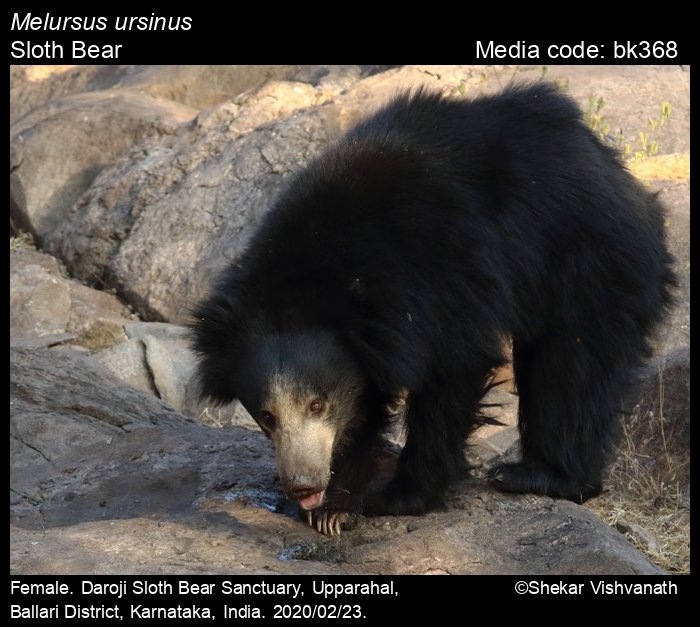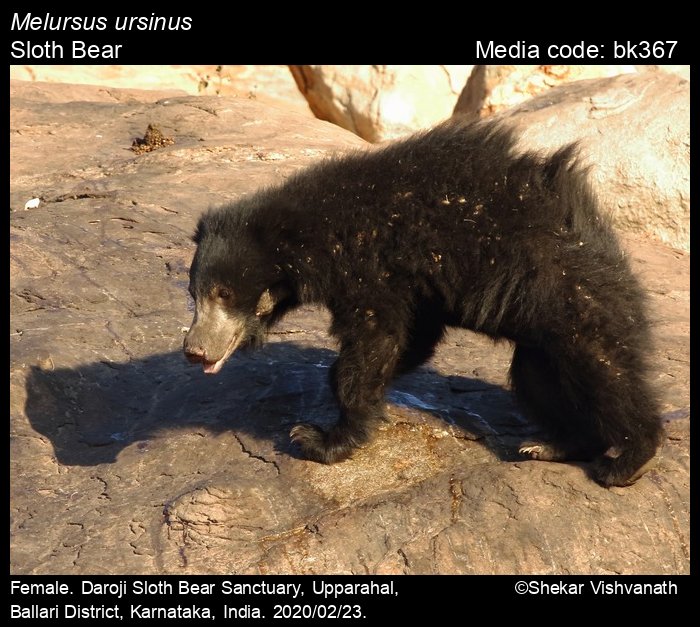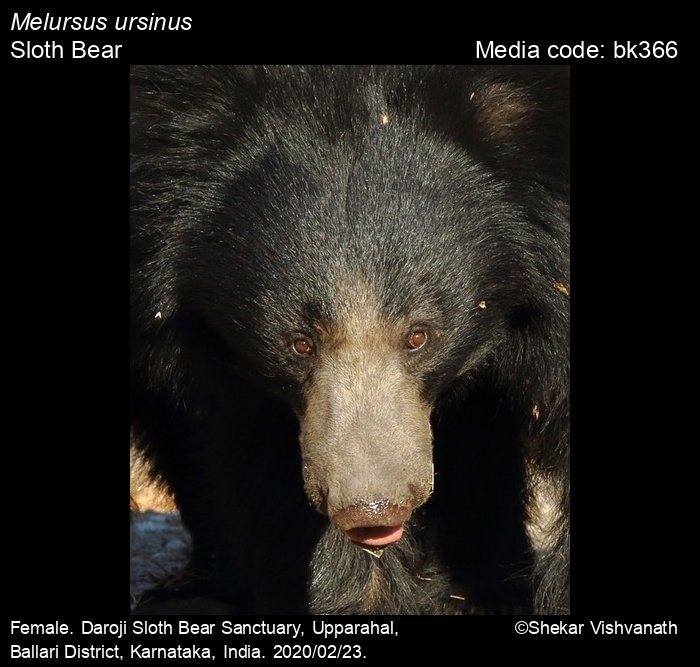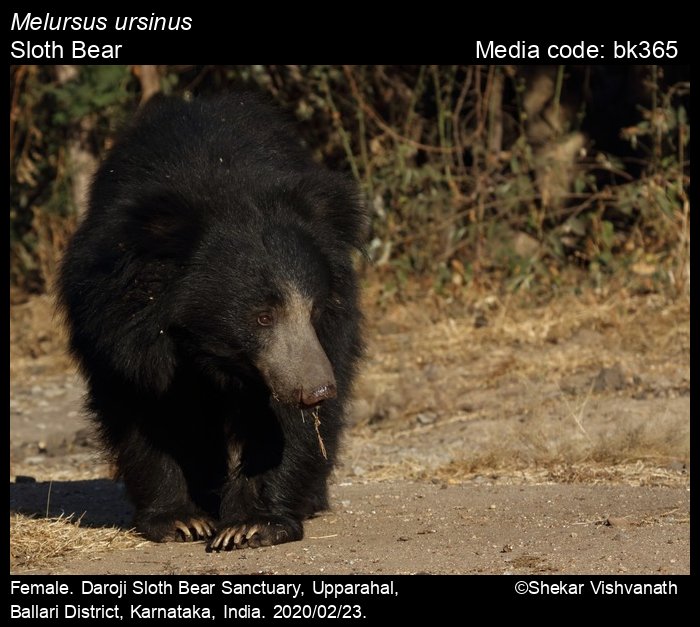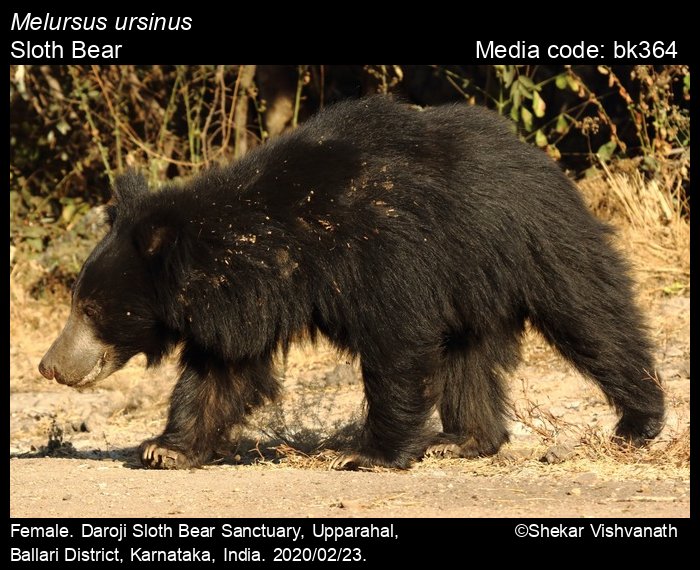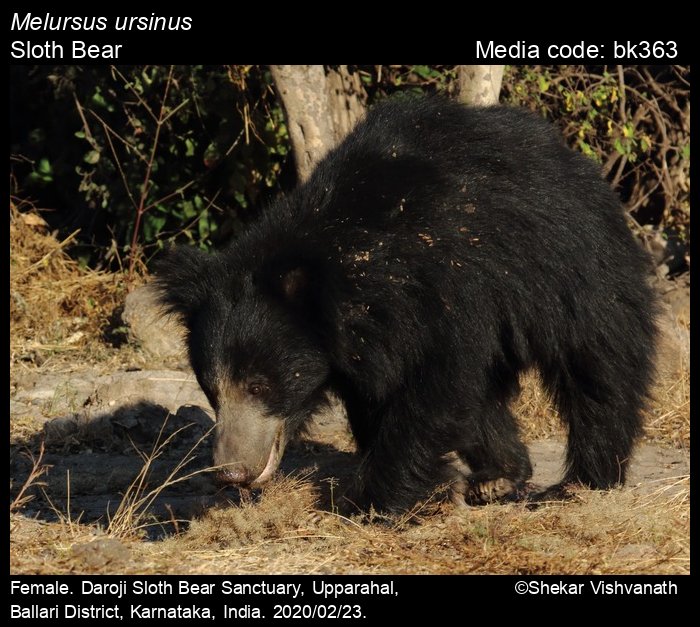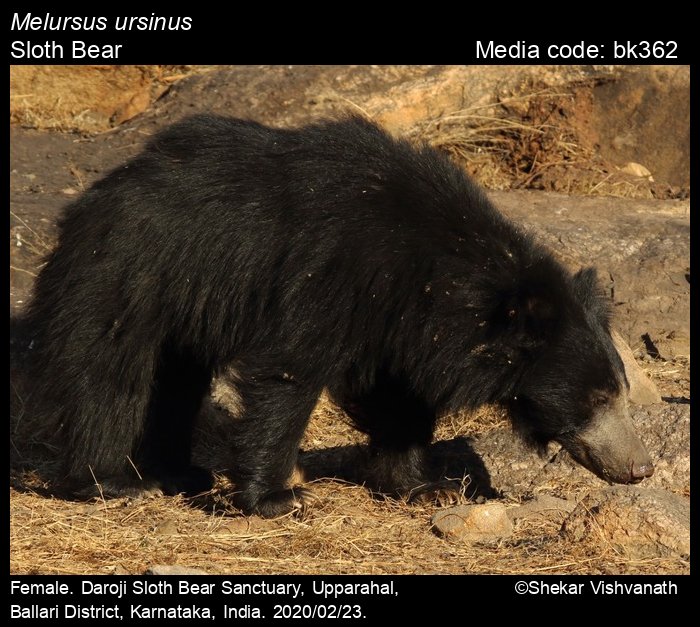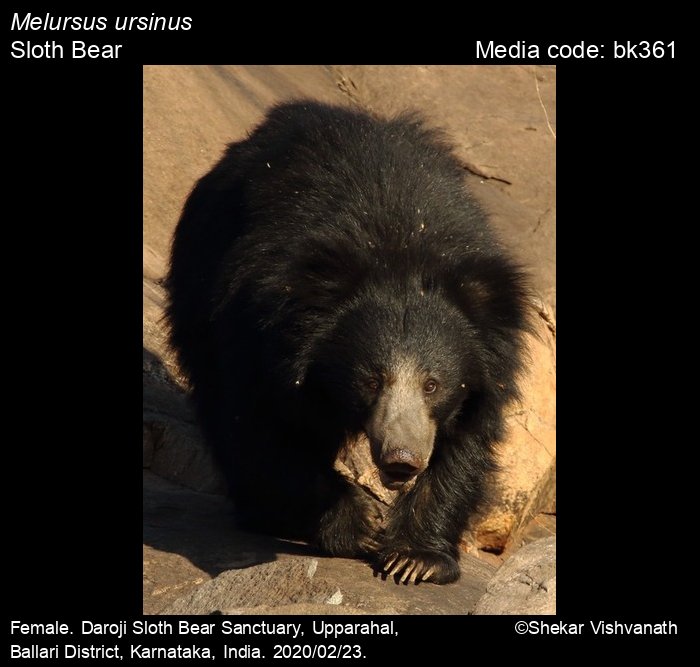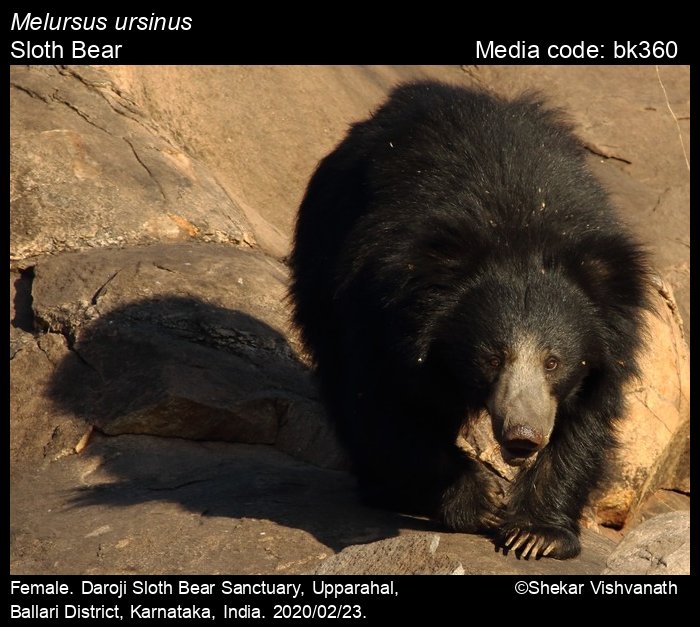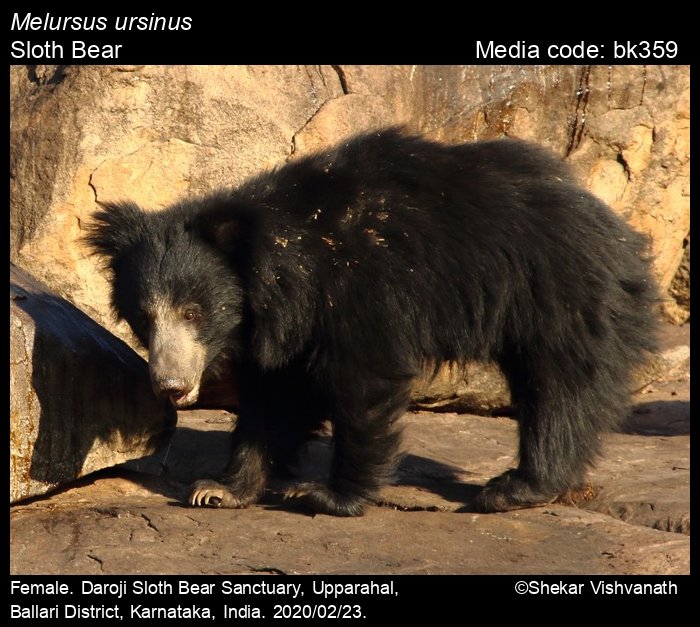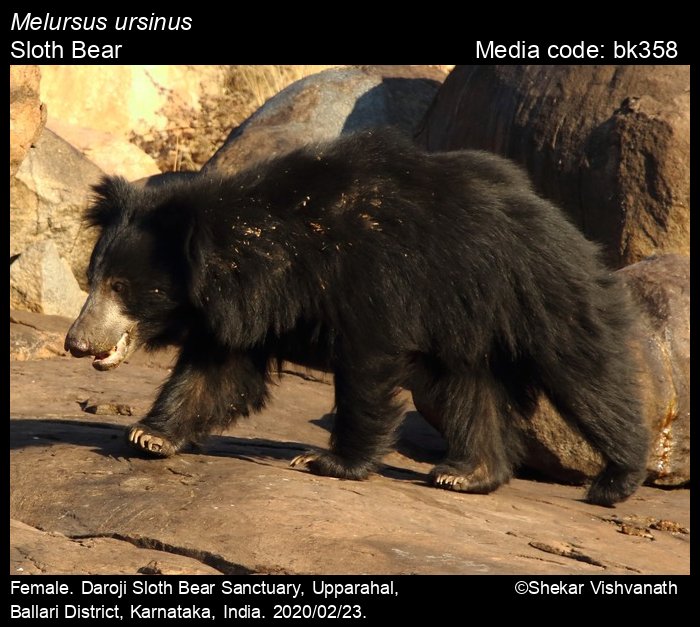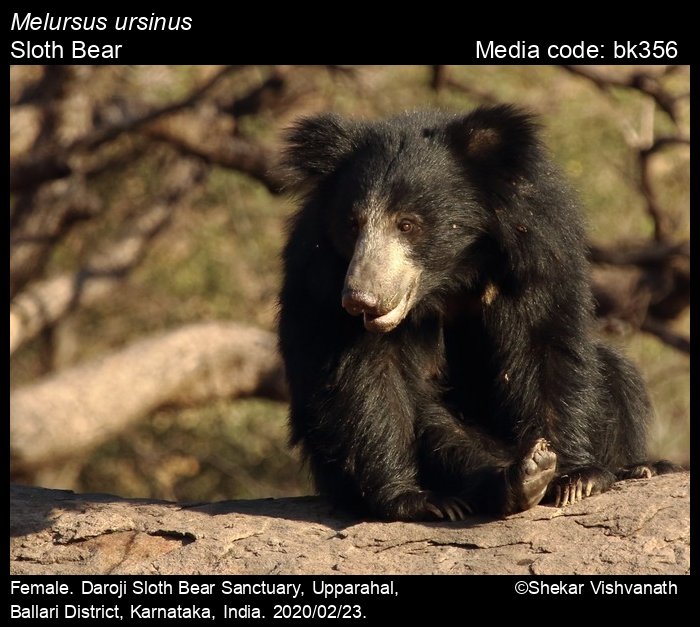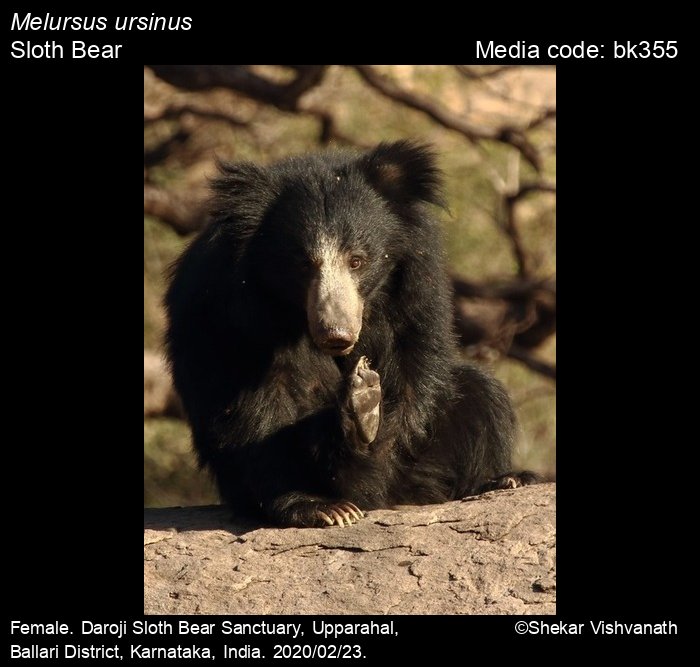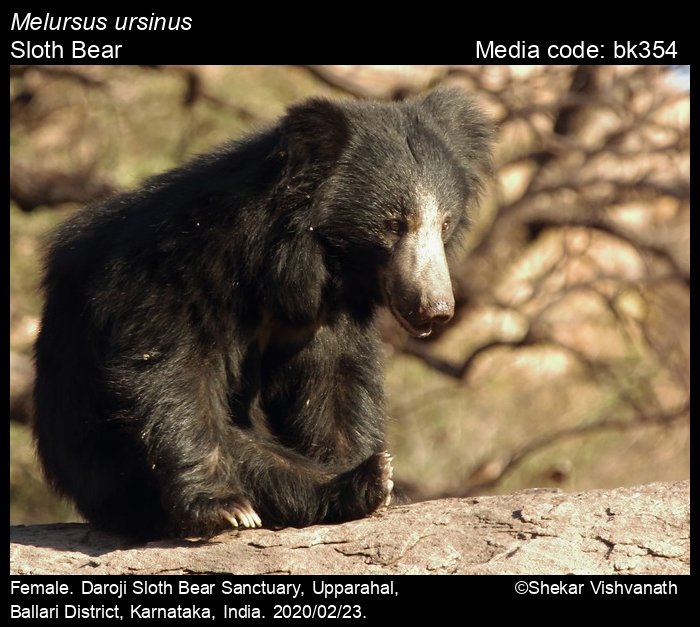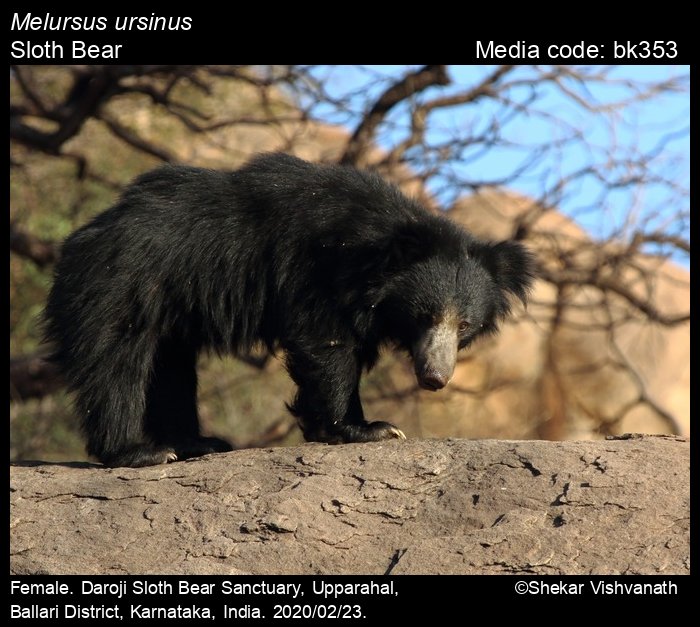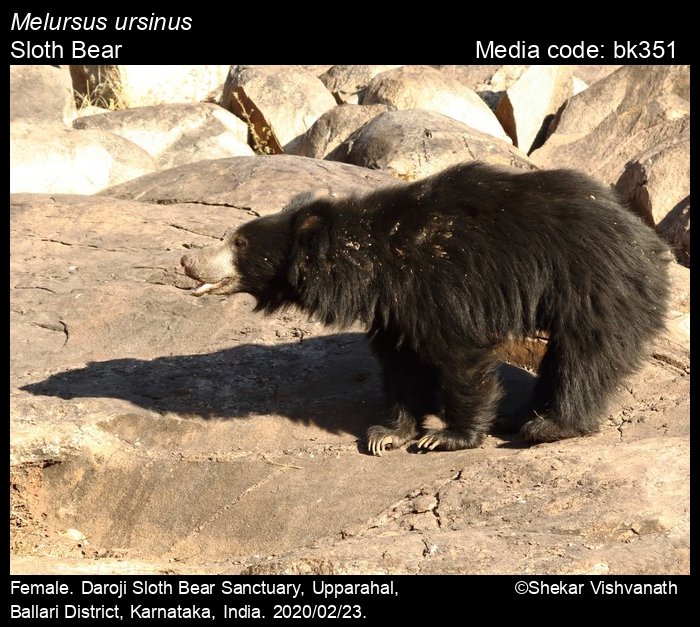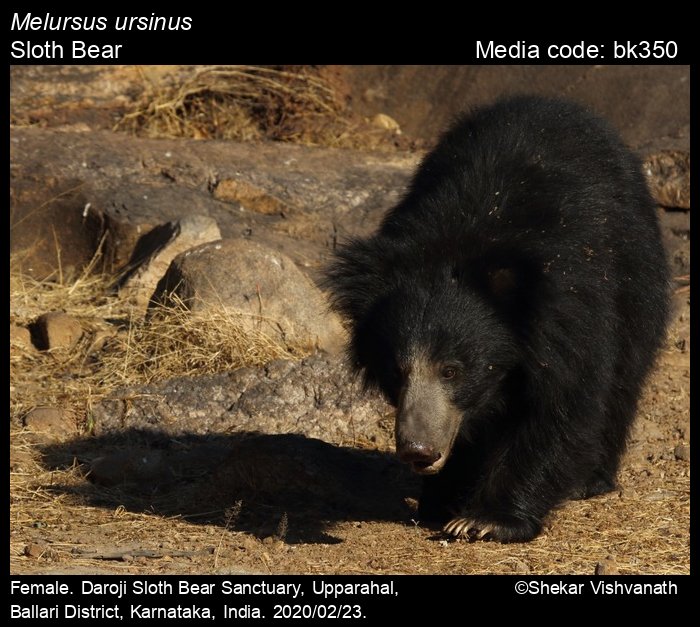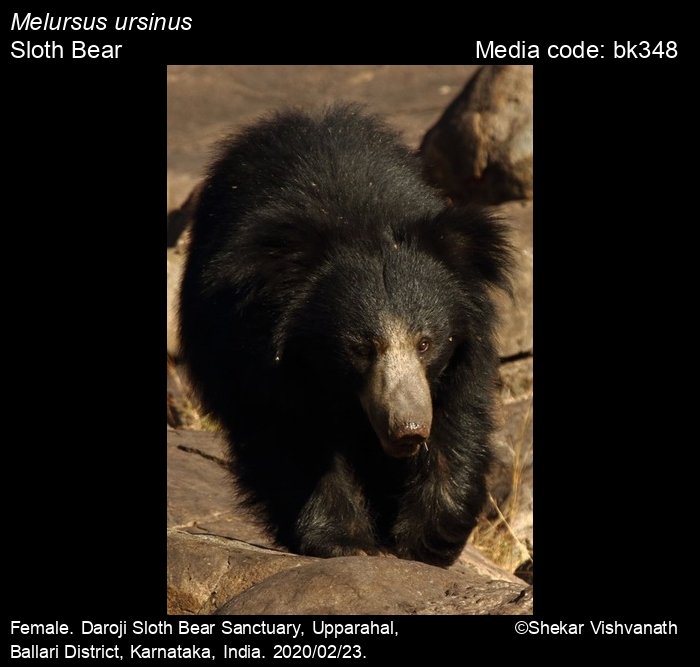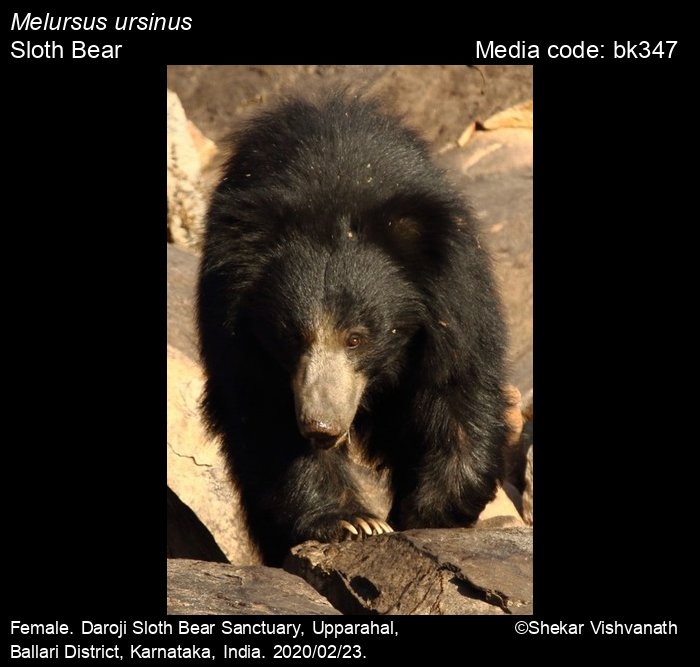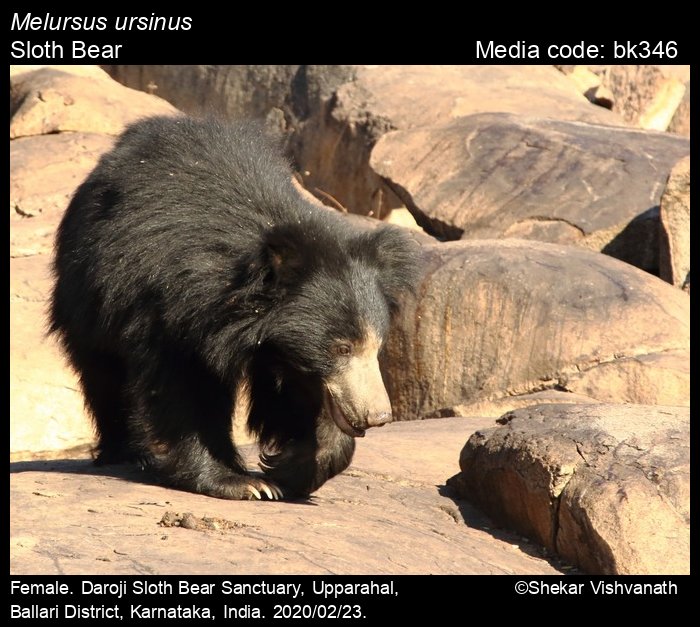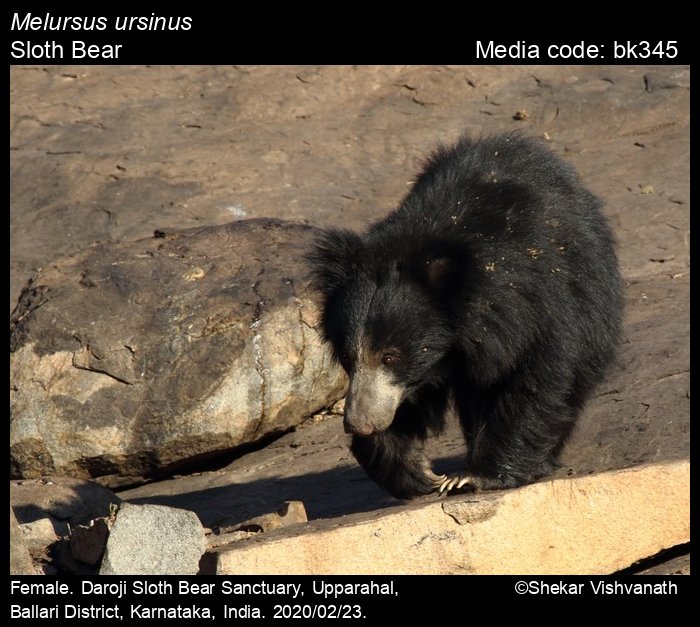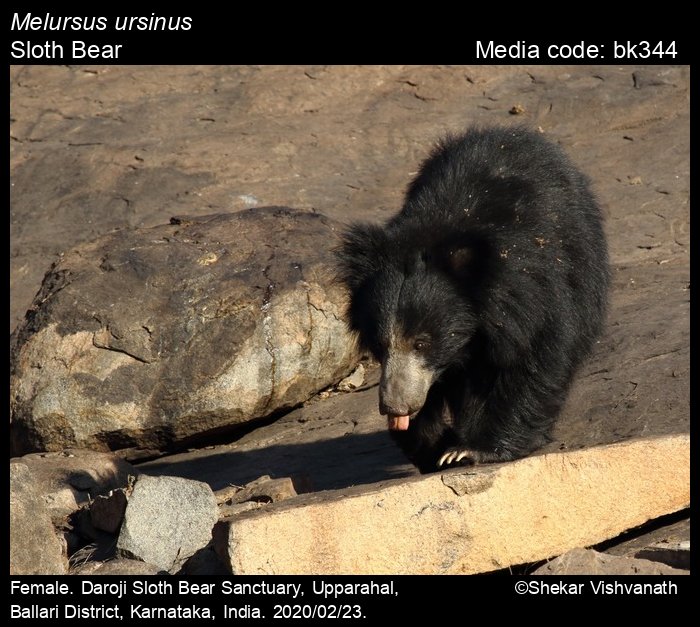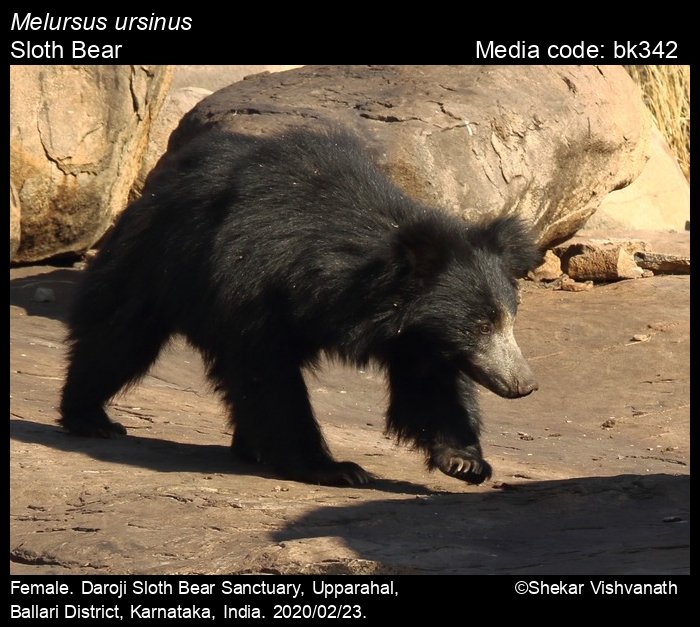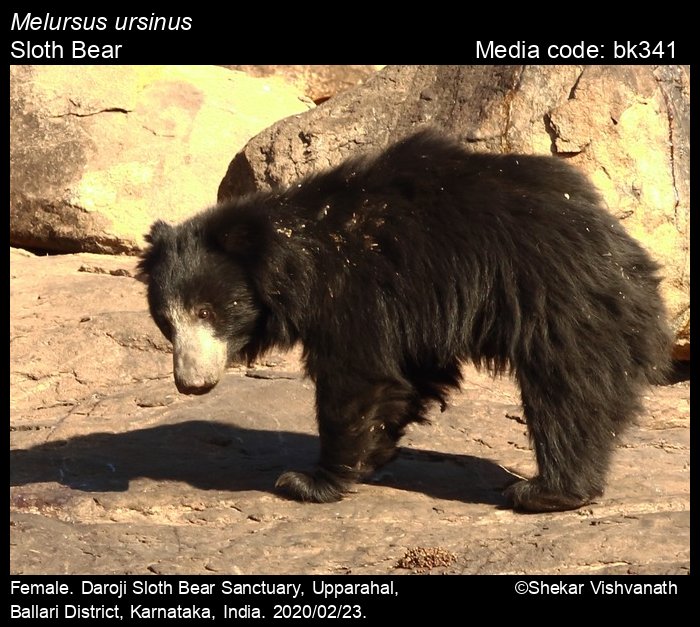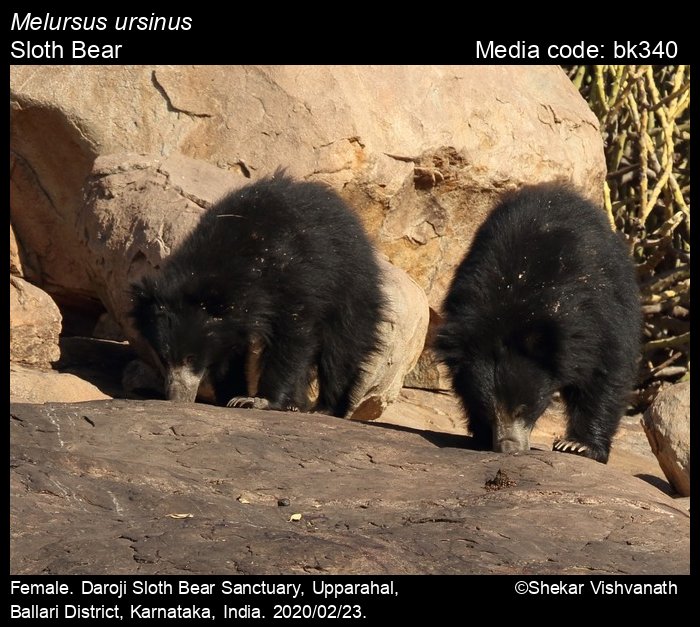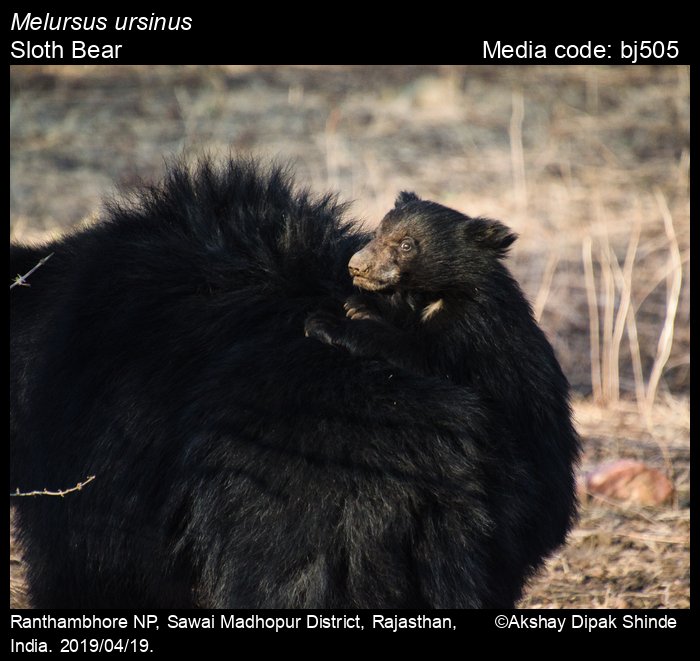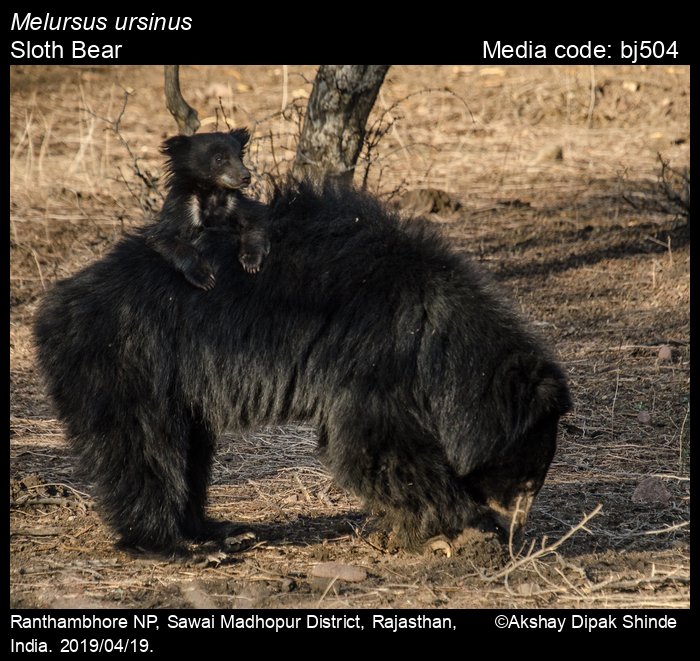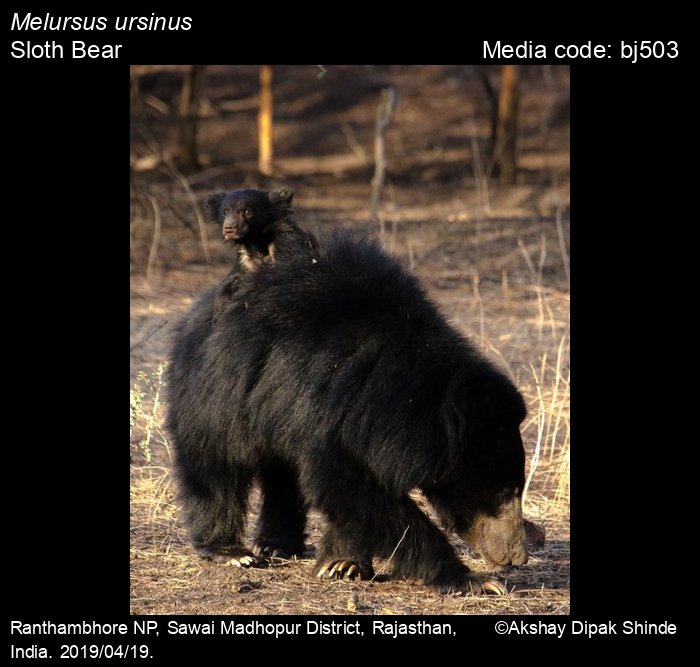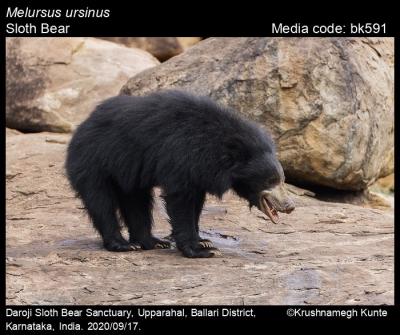
Subspecies in India
It is sometimes called as Labiated Bear due to its long lower lip and pallate, though it is never used/recognized as an alternative name. There are two subspecies recognized viz. "Indian" Sloth Bear M. u. ursinus and "Sri Lankan" Sloth Bear M. u. inornatus. There are taxonomic disputes over putting this species under Ursinus or Melursinus.
 This species is listed as Vulnerable in the IUCN Red List of Threatened Species (https://www.iucnredlist.org/).
This species is listed as Vulnerable in the IUCN Red List of Threatened Species (https://www.iucnredlist.org/).
Photo Gallery and Species Biology
This species is native to Indian subcontinent especially India, Sri Lanka and Nepal. It is regionally extinct from Bangladesh. It inhabits wet as well as dry forests, deciduous forests, grasslands, rocky terrains, grasslands, and scrublands. It is usually solitary except for mother being with cubs. It is largely insectivorous and frugivorous. It feeds almost exclusively on ants, termites (white ants), wasps, and bees in monsoon and fruits of different Ziziphus species, Diospyros sps., Madhuca sps.and Ficus sps. There are rare occassions of it scavenging on herbivore kills including livestock. Sloth Bear is mostly terrestrial but can climb trees quite well, especially for foraging. There are no predators of sloth bear, except for occasional hunting and/or fights with tiger. It is one of the few species where small cubs often ride on mothers' back while foraging.
Conservation Status:
 This species is listed as Vulnerable in the IUCN Red List of Threatened Species (https://www.iucnredlist.org/).
This species is listed as Vulnerable in the IUCN Red List of Threatened Species (https://www.iucnredlist.org/).
According to IUCN Red List assessment, population of this species is reducing all over its range. There are about 10,000 to 20,000 individuals estimated globally. Major threat to its survival come from habitat loss and fragmentation owing to human activities like residential and commercial activities, agriculture, logging, and mining. There are several cases of retaliatory killing and poisoning especially during the season of minor forest product collection.
According to IUCN Red List assessment, population of this species is reducing all over its range. There are about 10,000 to 20,000 individuals estimated globally. Major threat to its survival come from habitat loss and fragmentation owing to human activities like residential and commercial activities, agriculture, logging, and mining. There are several cases of retaliatory killing and poisoning especially during the season of minor forest product collection.
| State | Jan | Feb | Mar | Apr | May | Jun | Jul | Aug | Sep | Oct | Nov | Dec | No date |
|---|---|---|---|---|---|---|---|---|---|---|---|---|---|
| Andaman and Nicobar Islands | |||||||||||||
| Andhra Pradesh | |||||||||||||
| Arunachal Pradesh | |||||||||||||
| Assam | |||||||||||||
| Bihar | |||||||||||||
| Chandigarh | |||||||||||||
| Chhattisgarh | |||||||||||||
| Dadra & Nagar Haveli | |||||||||||||
| Daman & Diu | |||||||||||||
| Delhi | |||||||||||||
| Goa | |||||||||||||
| Gujarat | |||||||||||||
| Haryana | |||||||||||||
| Himachal Pradesh | |||||||||||||
| Jammu and Kashmir UT | |||||||||||||
| Jharkhand | |||||||||||||
| Karnataka | |||||||||||||
| Kerala | |||||||||||||
| Ladakh UT | |||||||||||||
| Lakshadweep | |||||||||||||
| Madhya Pradesh | 1 | 1 | 1 | 1 | |||||||||
| Maharashtra | 3 | 1 | |||||||||||
| Manipur | |||||||||||||
| Meghalaya | |||||||||||||
| Mizoram | |||||||||||||
| Nagaland | |||||||||||||
| Odisha | |||||||||||||
| Paschimbanga | |||||||||||||
| Pondicherry | |||||||||||||
| Punjab | |||||||||||||
| Rajasthan | 2 | 2 | |||||||||||
| Sikkim | |||||||||||||
| Tamil Nadu | |||||||||||||
| Telangana | |||||||||||||
| Tripura | |||||||||||||
| Uttar Pradesh | |||||||||||||
| Uttarakhand | |||||||||||||
| West Bengal | |||||||||||||
| Total | 1 | 5 | 3 | 1 | 1 | 1 |
Page citation
Anonymous 2025. Melursus ursinus Shaw, 1791 – Sloth Bear. In Bayani, A., R. Chakravarty, and K. Kunte (Editors) (Chief Editors). Butterflies of India, v. 1.13. Published by the Indian Foundation for Butterflies. URL: https://www.mammalsofindia.org/melursus-ursinus, accessed 2025/12/12.
